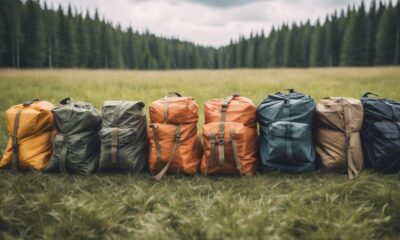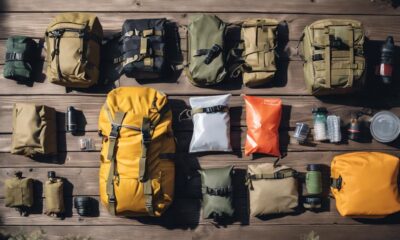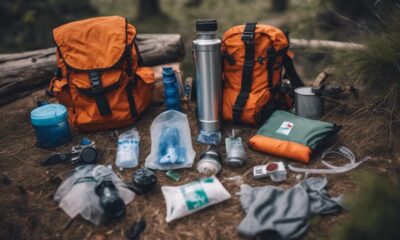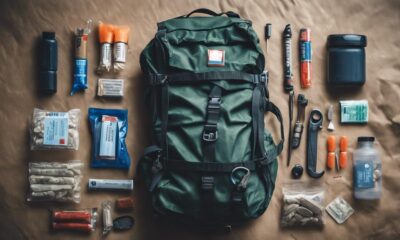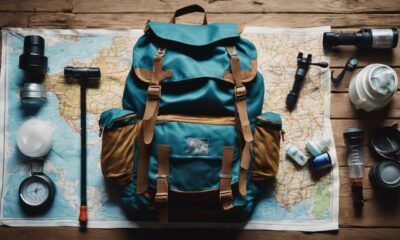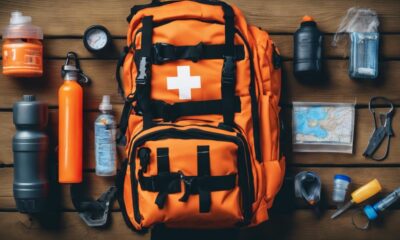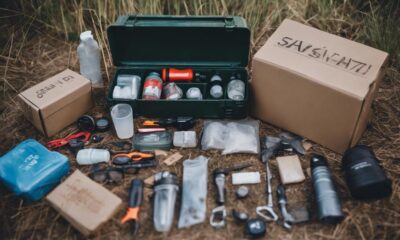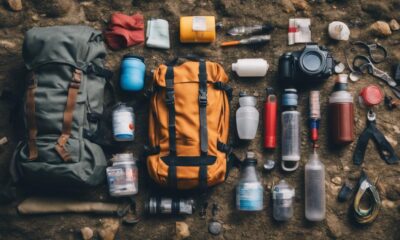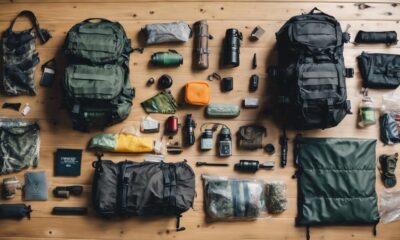How to Forage
Florida’s Foraging Secrets: Eat Wild and Fresh!
Magnificent flavors await in Florida's untamed landscape, but only for those who dare to unearth the hidden treasures of the wild.
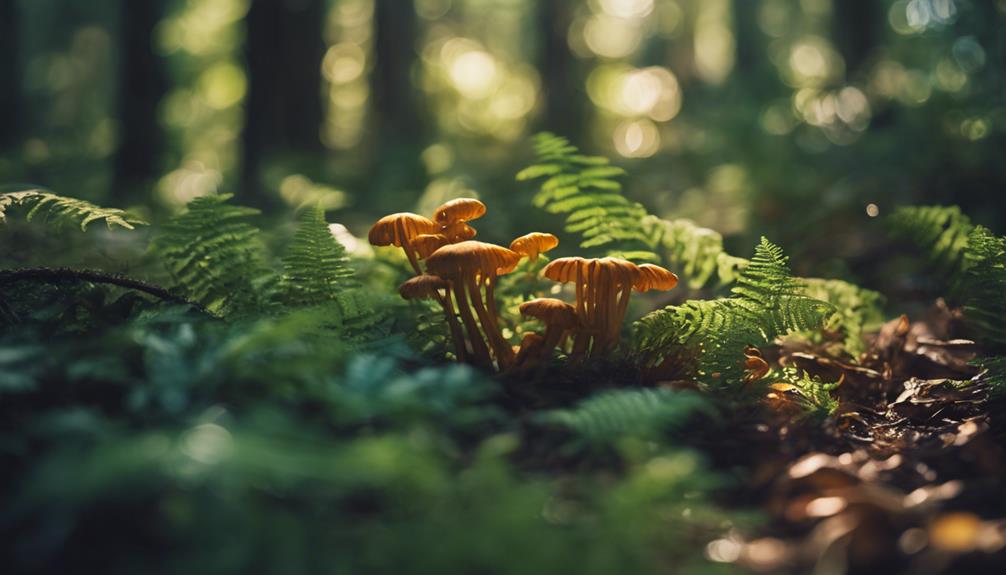
As you explore Florida's diverse landscape, you'll uncover a paradise of wild edibles waiting to be discovered and devoured. From flax lily berries to Spiderwort flowers, each plant offers unique flavors and textures. Local experts and organizations like the Native Plant Society can guide you in identifying and harvesting wild edibles. With proper knowledge, you can forage for fresh fungi, like Lion's Mane, and discover edible treasures in the Everglades, like saw palmetto berries and Coontie roots. As you continue on this culinary adventure, you'll uncover the secrets of Florida's wild and fresh flavors, and the possibilities will be endless.
Key Takeaways
- Florida's diverse landscape offers a variety of wild edibles, including flax lily berries, Spiderwort flowers, and saw palmetto berries.
- Local experts and organizations, like the Native Plant Society, provide guidance on identifying and harvesting wild edibles.
- Foraging in Florida's subtropical climate and diverse geography builds confidence in identifying edible plants with a wide range of options.
- Seasonal plant study is crucial for deep knowledge, as plant characteristics and edibility vary across seasons.
- Proper identification is vital to avoid toxic species, especially when foraging for wild mushrooms, and expert guidance is recommended.
Discovering Florida's Hidden Edibles
As you explore Florida's diverse landscape, you'll reveal a treasure trove of hidden edibles, from flax lily berries to Spiderwort flowers, leaves, and stems, waiting to be discovered and savored.
Florida's wild edible plants are a forager's paradise, offering a wide range of flavors and textures to explore. With guidance from local experts and organizations like the Native Plant Society, you'll gain confidence in identifying and harvesting these wild edibles. Whether you’re interested in nutritious greens, medicinal herbs, or flavorful berries, there’s something for every palate in Florida’s natural landscape. Foraging in Wyoming’s wilds, by contrast, offers a different yet equally rewarding experience with high-altitude plants and unique ecosystems to discover. Both regions offer incredible opportunities for reconnecting with nature and cultivating sustainable, seasonal diets.
As you investigate further into Florida's flora, you'll uncover the nuances of each plant, from the sweet taste of flax lily berries to the subtle bitterness of Spiderwort leaves.
By studying these plants season after season, you'll develop a deep understanding of their variations and habitats. With each new discovery, you'll reveal the secrets of Florida's wild edible plants, and your culinary adventures will take on a whole new dimension.
Wild Delights of the Sunshine State
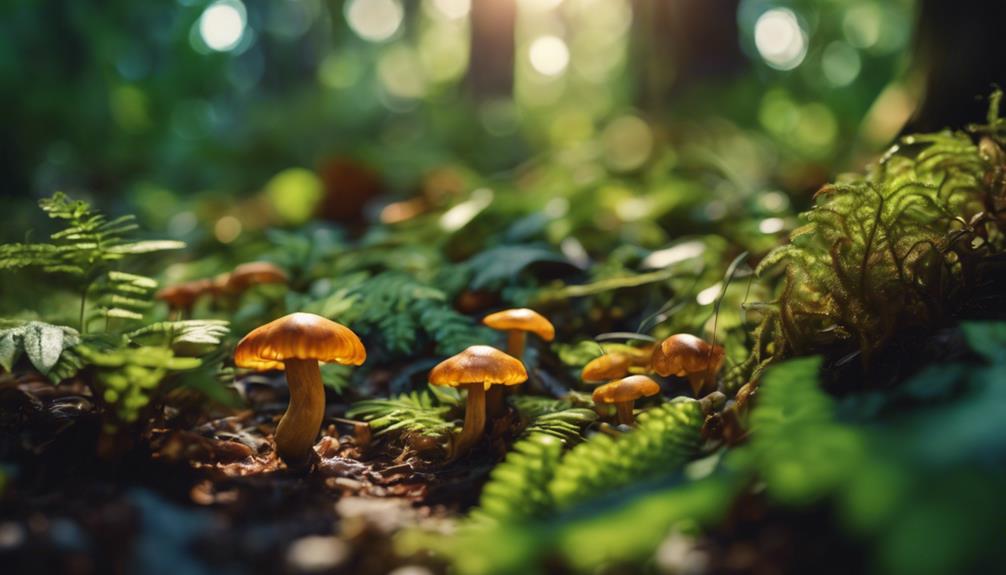
You'll stumble upon a fascinating array of wild delights in the Sunshine State, where the subtropical climate and diverse geography have given rise to a vibrant tapestry of flavors, textures, and aromas.
As you venture into Florida's wilderness, you'll discover a plethora of wild edibles waiting to be explored. From Flax lily berries to Spiderwort flowers, the variety of wild food is vast and exciting.
Foraging in Florida is an ideal way to build confidence in identifying edible plants, thanks to the wide range of options available. To guarantee accurate identification, consider consulting local experts or the Native Plant Society.
Studying plants season after season is essential for developing a deep knowledge of edible flora in Florida. Remember, accurate identification is crucial – Jamaica caper flower buds, for instance, aren't listed as edible in Florida.
Foraging for Fresh Fungi
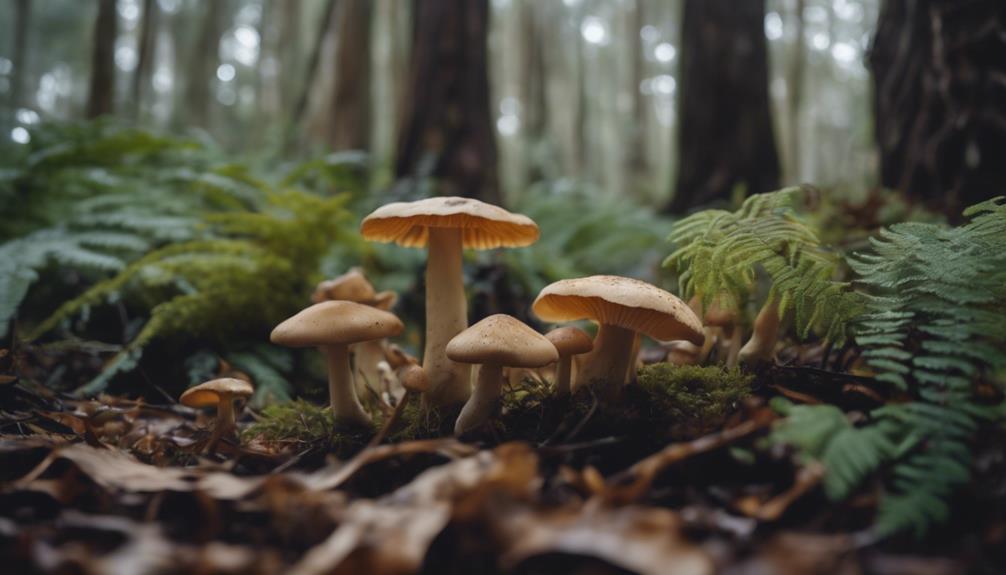
Venture into Florida's forests and you'll uncover a fascinating domain of fresh fungi, where unique varieties like Lion's Mane await discovery. As you forage for wild, edible mushrooms, remember that proper identification is vital. You'll need to distinguish between safe, edible species and their toxic look-alikes.
The Jack-O'-Lantern mushroom, for instance, can mimic the appearance of a poisonous species, making it important to exercise caution. Florida's diverse ecosystems offer a wide range of wild mushrooms for you to discover, but it's critical to approach foraging with knowledge and respect.
Don't rely on guesswork or assumptions – take the time to learn about the different species, their habitats, and distinguishing features. With the right skills and mindset, you'll be able to uncover the secrets of Florida's fungal kingdom, enjoying the thrill of the hunt and the satisfaction of savoring fresh, wild, and edible fungi.
Edible Plants of the Everglades
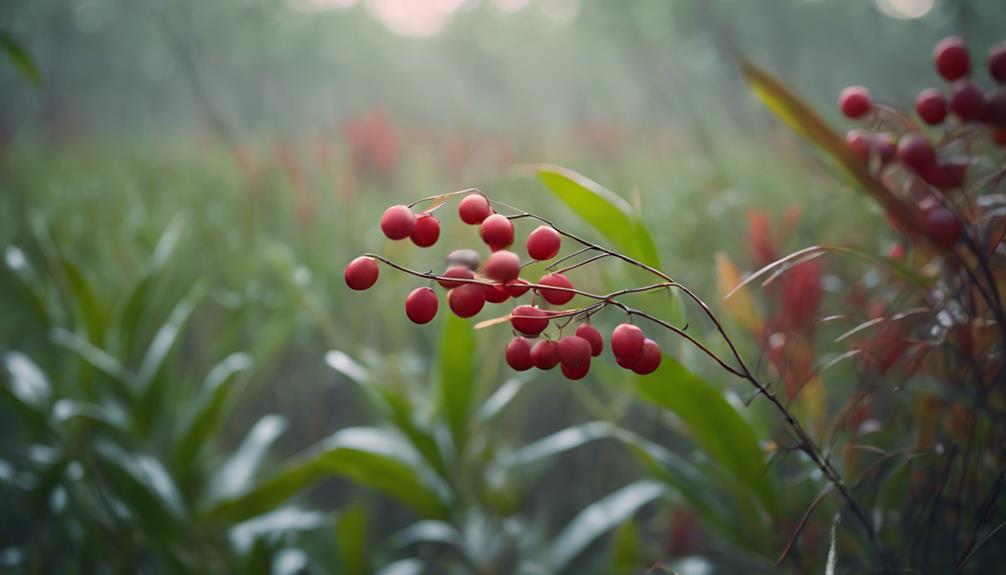
As you venture into the Everglades, you'll discover a treasure trove of edible plants waiting to be discovered.
From the antioxidant-rich saw palmetto berries to the Coontie roots that can be used to make flour, the Everglades is a forager's paradise.
Get ready to uncover the swampy delicacies and wild herbs with medicinal properties that'll take your foraging skills to the next level.
Swampy Delicacies Abound Here
Deep in the Everglades, the swampy waters and tangled vegetation conceal a treasure trove of edible delights, waiting to be uncovered by intrepid foragers. As you venture into this unique ecosystem, you'll discover a variety of common plants that are not only edible but also packed with nutrients. Dollar weed, for instance, is a common plant found in North America, including the Everglades, and is rich in vitamins and minerals.
| Edible Plant | Description |
|---|---|
| Saw Palmetto Berries | Rich in nutrients, used for medicinal purposes |
| Cattail Shoots | Edible and can be cooked or eaten raw |
| Wild Grapes | Sweet and juicy, perfect for snacking |
As you explore the Everglades, you'll find that learning to identify and harvest these wild edibles enhances the foraging experience. From elderberries to beautyberries, the Everglades offers a diverse range of edible plants waiting to be discovered. So, grab your basket and get ready to forage for these swampy delicacies!
Wild Herbs for Medicine
Beyond the swampy delicacies, you'll find a wealth of wild herbs in the Everglades, packed with medicinal properties that have been harnessed by indigenous communities for centuries.
As you venture into the wild, you'll discover that these herbs offer natural remedies for various ailments. Foraging for wild herbs in the Everglades provides a unique opportunity to connect with nature and traditional healing practices.
You'll find that some of these herbs have been used for centuries to treat everything from fever to skin irritations.
As you explore the wild herbs of the Everglades, you'll uncover new ways to incorporate them into your natural medicine practices. From treating digestive issues to reducing inflammation, the medicinal properties of these herbs are vast and varied.
By foraging for these wild herbs, you'll not only gain access to natural remedies but also develop a deeper appreciation for the natural world and the traditional practices of indigenous communities.
Harvesting Coastal Treasures
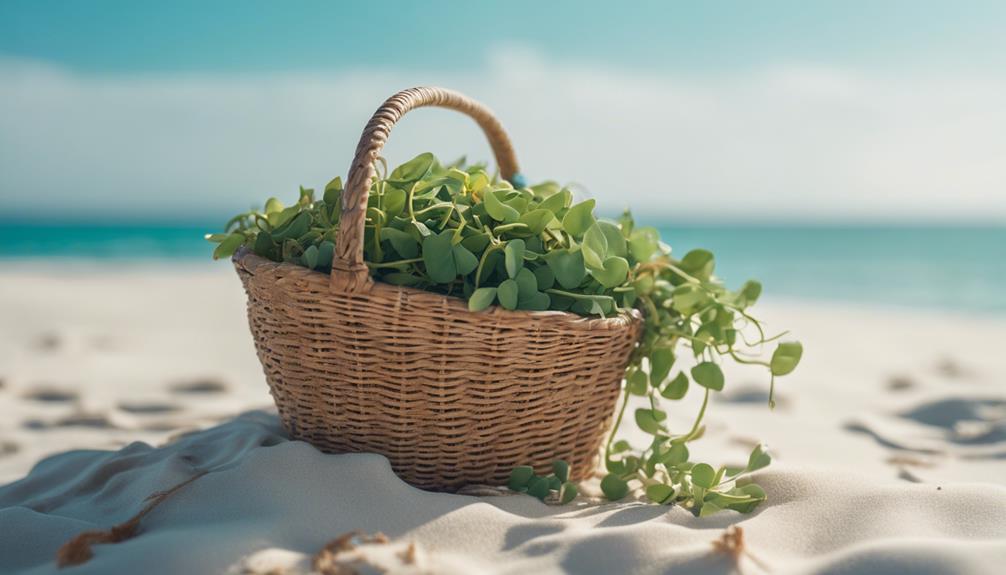
You'll find a treasure trove of edible delights along Florida's coastline, where sea grapes, sea purslane, and beach sunflowers thrive. One thing you'll love about coastal foraging is that it's as simple as taking a walk along the beach and discovering these hidden gems. As you stroll, keep an eye out for sea grapes, whose leaves can be used to make dolmas or enjoyed fresh as a salty snack. Sea purslane, rich in vitamins and minerals, adds a burst of freshness to any meal. Beach sunflowers, with their edible leaves and seeds, bring a unique flavor to salads and dishes.
Here's a snapshot of what you can expect to find on your coastal foraging adventure:
| Plant | Edible Parts | Uses |
|---|---|---|
| Sea Grapes | Leaves | Dolmas, Salty Snack |
| Sea Purslane | Leaves, Stems | Fresh Salads, Sauces |
| Beach Sunflowers | Leaves, Seeds | Salads, Dishes |
| Wild Blueberries | Fruits | Snacking, Baking |
| Beach Greens | Leaves | Fresh Salads, Smoothies |
As you explore the coastline, remember that coastal foraging provides a sustainable way to connect with nature and enjoy local, wild foods. Happy foraging!
Berries and Blossoms of Spring
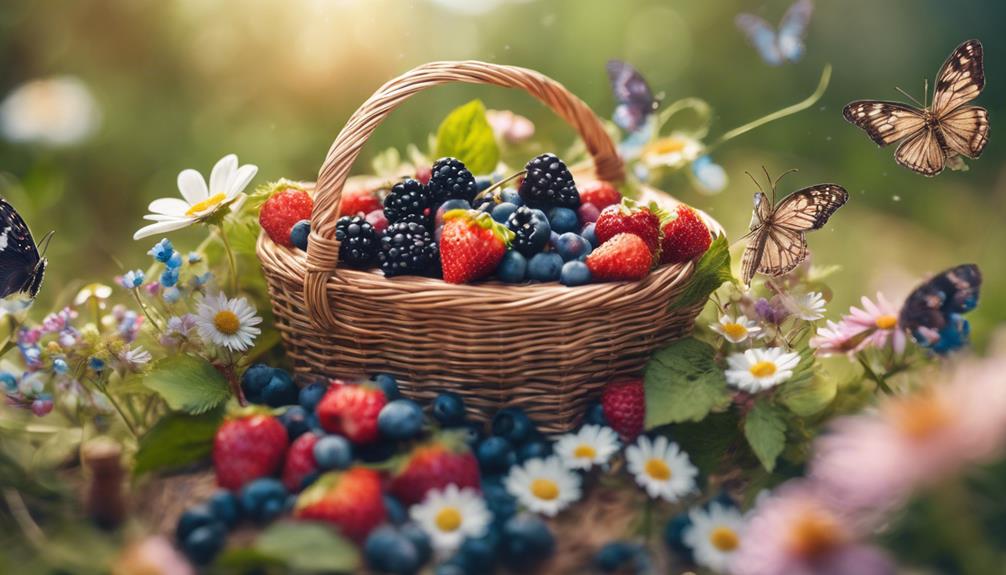
As you venture into Florida's spring landscape, you'll discover a treasure trove of wild berries and blossoms waiting to be uncovered.
You're about to learn the secrets of harvesting these sweet treats, from tips on identifying the ripest berries to exploring the unique flavor profiles of blossoming flowers.
Get ready to uncover the best hotspots for foraging in spring, and elevate your foraging skills in the process.
Wild Berry Harvesting Tips
During Florida's spring season, you're likely to stumble upon ripe wild berries, including blackberries, blueberries, and strawberries, which are ready to be plucked and devoured. As you venture out to forage for these tasty treats, make sure to follow some essential harvesting tips.
| Berry | Color | Harvest Time |
|---|---|---|
| Blackberry | Dark purple | Late spring |
| Blueberry | Powder blue | Early spring |
| Strawberry | Bright red | Early spring |
When foraging for wild berries, make sure to inspect the berries carefully to make certain they're ripe and free of mold or pests. Avoid berries that are unripe, as they may cause stomach issues. Also, be cautious of lookalike berries that may be poisonous, like pokeweed. By being mindful of these tips, you can enjoy a safe and delicious harvest of fresh, wild berries.
Blossoming Flavor Profiles
Spring's vibrant blooms and berries in Florida offer you a kaleidoscope of flavors, from the sweet and subtle to the bold and tangy. As you explore the edible blooms and berries of spring, you'll discover a world of flavors to elevate your culinary creations.
Flax lily berries, for instance, burst with sweetness and subtle hints of flavor. Spiderwort flowers add a delicate taste to dishes, while their vibrant colors add a pop of color to your plates. You might even experiment with Jamaica caper flower buds, which, although not traditionally considered edible, bring a unique floral essence to recipes.
Spring Foraging Hotspots
Your search for Florida's hidden gems begins in its parks, nature reserves, and even urban areas, where wild edible plants thrive in the spring. As you explore these areas, keep an eye out for open fields and wooded areas, where wild blackberries, blueberries, and strawberries are ripe for the picking. You might also stumble upon edible blossoms like Elderflowers, Honeysuckle, and Daylilies in gardens and natural areas.
| Spring Foraging Hotspots | Wild Edibles to Find | Tips for Foraging |
|---|---|---|
| Parks | Wild blackberries, blueberries | Look for open fields and wooded areas |
| Nature Reserves | Elderflowers, Honeysuckle | Inspect gardens and natural areas |
| Urban Areas | Wild strawberries, Daylilies | Explore abandoned lots and green spaces |
| Wooded Areas | Wild blueberries, blackberries | Be mindful of pesticide use |
| Gardens | Edible flowers and herbs | Respect private property and foraging laws |
Summer's Bounty of Wild Herbs
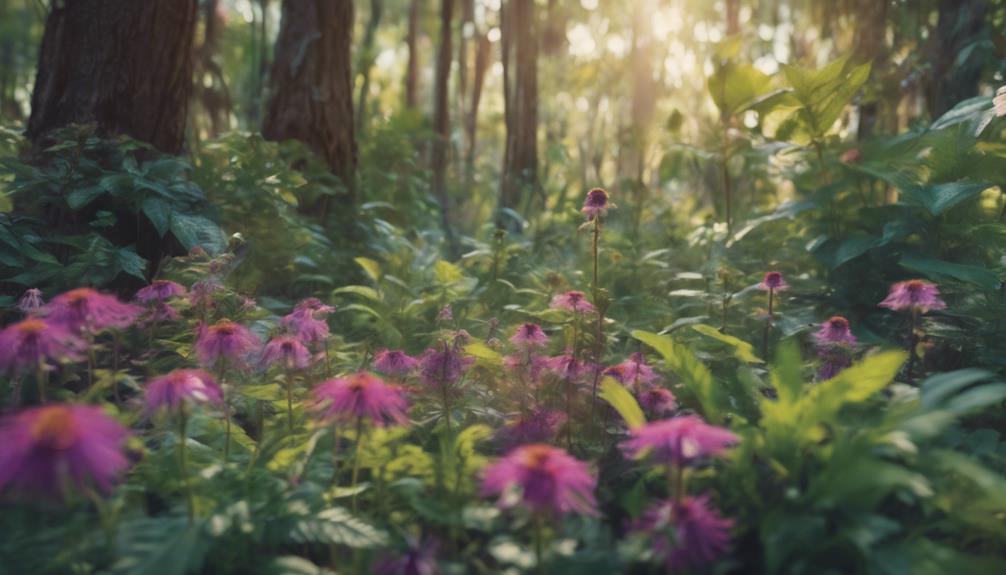
As you venture into Florida's lush summer landscape, you'll discover a treasure trove of wild herbs waiting to be foraged. Summer brings an abundance of fresh flavors to incorporate into your meals, and foraging for wild herbs is a great way to do so.
Here are some of the summer's bounty of wild herbs you can forage:
- Wood Sorrel: With its heart-shaped leaves, wood sorrel offers a lemony taste perfect for summer dishes.
- Caesar Weed: As a member of the mint family, Caesar weed adds an invigorating twist to salads and teas.
- Fresh Flavors: Foraging for wild herbs in the summer allows you to incorporate fresh, local ingredients into your meals.
- Unique Flavors: Wild herbs like wood sorrel and Caesar weed provide unique flavors that will elevate your summer cooking.
Autumn's Abundance of Mushrooms
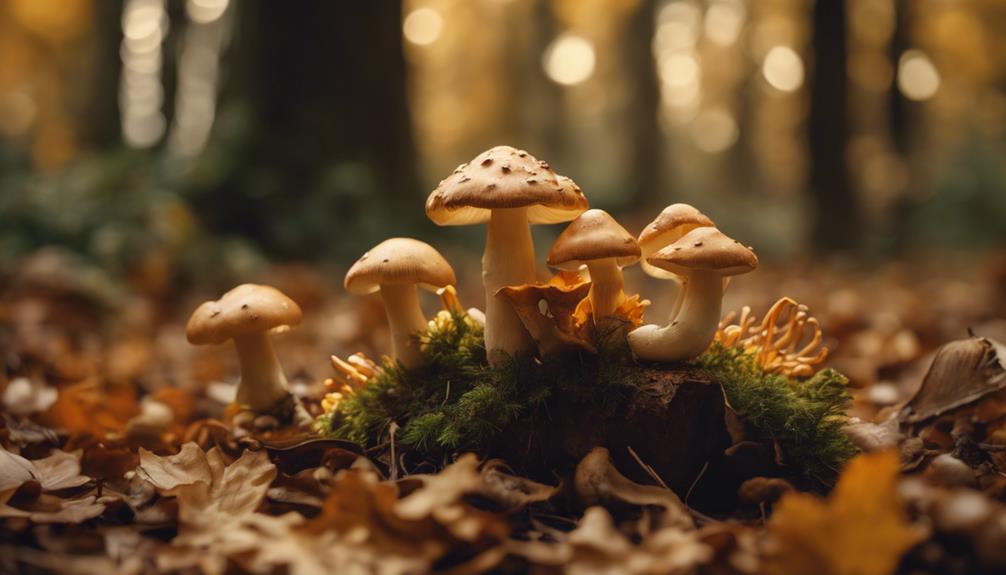
As you explore Florida's autumn landscape, you'll discover a treasure trove of edible mushrooms waiting to be uncovered. From the forest floor to the trees themselves, autumn's abundance of mushrooms is ripe for the picking – if you know where to look.
In the following sections, we'll uncover the forest floor finds and fungi foraging tips you need to get started on your mushroom foraging journey.
Forest Floor Finds
Having advanced knowledge of mushroom identification is crucial during autumn in Florida when the forest floor transforms into a treasure trove of wild mushrooms, beckoning foragers to uncover the hidden gems. Local mycological societies and experts can provide guidance on identifying and safely consuming wild mushrooms.
Some of the most sought-after species you might find include:
- Chanterelles, prized for their fruity, apricot-like aroma and peach-colored flesh
- Bolete mushrooms, characterized by their distinctive pores and rich, earthy flavor
- Other edible species, each with unique characteristics and flavors
As you explore the forest floor, remember to always prioritize safety and responsible foraging practices. With the right knowledge and precautions, you can add a diverse and flavorful element to your wild food gathering in Florida.
Fungi Foraging Tips
When autumn's warm rains awaken Florida's fungal bounty, you'll find yourself surrounded by an array of species, each with its unique characteristics and flavor profiles.
As you venture into the woods, keep an eye out for mushrooms growing near trees, in damp areas, or on decaying wood – these are prime foraging spots.
But before you start picking, make sure you're absolutely sure about what you're collecting. Consult with local experts to guarantee safe identification of edible mushrooms, as some species can be toxic or even deadly.
Popular edible mushrooms in Florida include chanterelles, oyster mushrooms, and chicken of the woods.
Remember, it's always better to err on the side of caution – if in doubt, don't eat it! With a little knowledge and caution, you can enjoy the rich flavors and textures of Florida's wild mushrooms.
Happy foraging!
Winter's Wild and Forgotten Foods
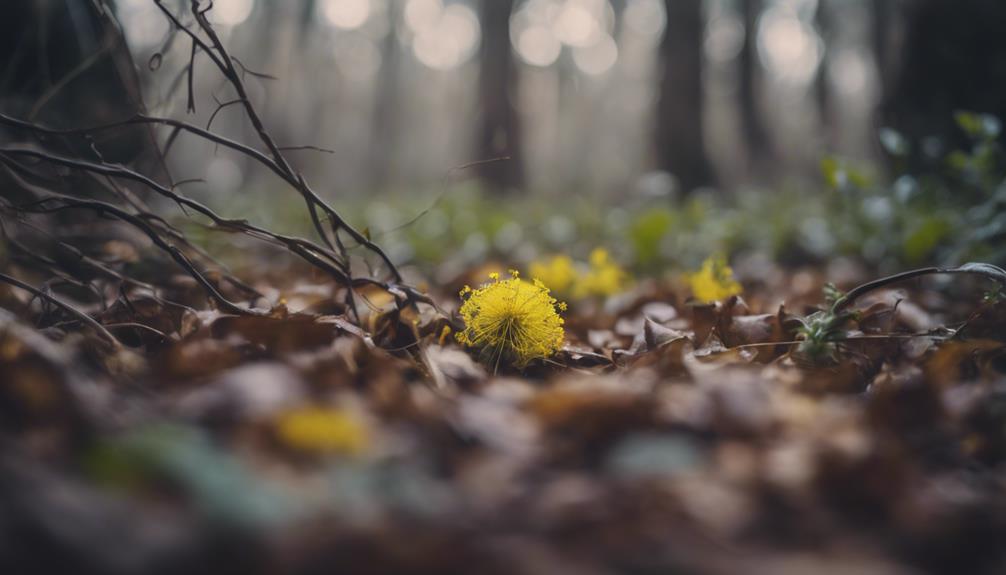
You'll be surprised by the variety of wild edible plants that winter in Florida has to offer, including chickweed, dandelion, and wild onions. As you venture out into the wild, you'll discover a treasure trove of nutritious and tasty finds.
Winter is an excellent time to forage for wild garlic, winter cress, and other forgotten foods.
Some of the winter wonders you can uncover include:
- Chickweed, a common winter green, packed with nutrients and vitamins
- Dandelions, rich in vitamins and perfect for adding a bitter flavor to your dishes
- Wild onions, a flavorful addition to any meal
- Wild garlic, a tasty alternative to store-bought garlic
As you explore Florida's wilderness during the colder months, keep an eye out for these hidden gems. With a little knowledge and practice, you can enjoy the freshest, most flavorful ingredients nature has to offer.
Cooking With Wild Florida Flavors
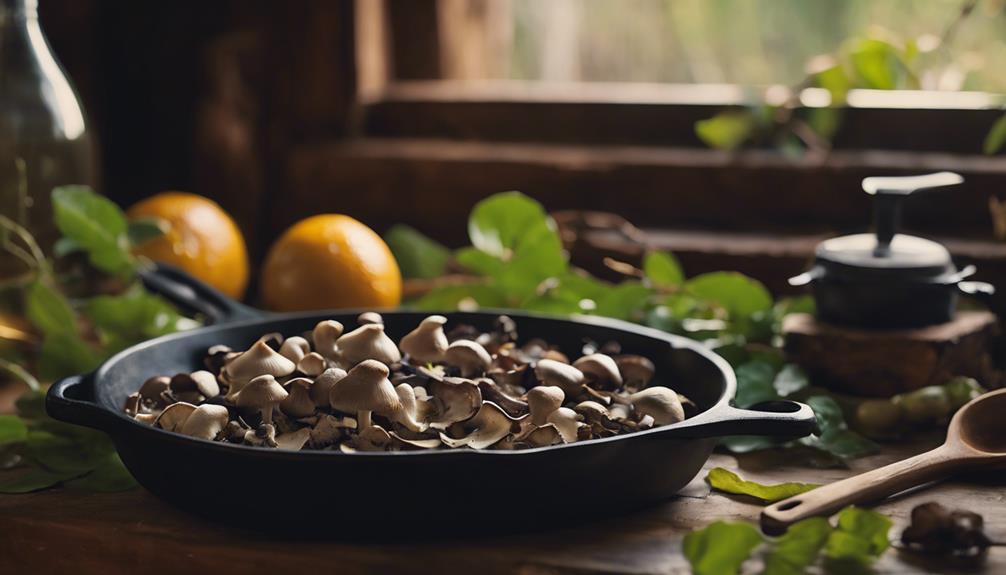
As you bring your foraged treasures back to the kitchen, start experimenting with innovative recipes that showcase the unique flavors and textures of Florida's wild ingredients.
You'll be surprised at how cooking with wild Florida flavors can reveal the full potential of your dishes and add a touch of freshness and nutrition.
For instance, incorporate flax lily berries into a sweet and tangy jam or use Spiderwort flowers to create a beautiful and edible garnish.
By utilizing wild Florida plants in your recipes, you'll not only enhance the local and seasonal aspect of your meals but also discover new flavors and textures that will set your culinary creations apart.
Don't be afraid to get creative and experiment with different combinations of wild ingredients to create truly unique dishes.
With Florida's diverse flora at your fingertips, the possibilities are endless, and your taste buds will thank you.
Frequently Asked Questions
Is Foraging Legal in Florida?
You're wondering if foraging is legal in Florida. Well, yes, it is, as long as you're not on private property without permission and you're not harvesting protected or endangered plants.
What Is the Number One Rule of Foraging?
As you venture into the wild, remember that the number one rule of foraging is to positively identify plants before consumption, lest you risk ingesting toxic species, and always prioritize caution over curiosity.
What Not to Eat When Foraging?
When foraging, you should avoid eating plants with shiny leaves, milky sap, strong odors, thorns, or bitter tastes, as they're likely toxic, and steer clear of mushrooms unless you're an expert at identifying them safely.
What Food Grows Wild in Florida?
You're curious about what food grows wild in Florida! You'll find an array of wild edibles, including flax lily berries and Spiderwort flowers, leaves, and stems, but be sure to identify them correctly to avoid mistakes.
Conclusion
As you begin your foraging adventure, remember to 'seize the day' and respect the land. Florida's wild edibles are a treasure trove waiting to be discovered.
From the Everglades to the coast, each season brings a new bounty of flavors and ingredients. So, grab your basket and get foraging!
With a little knowledge and a lot of curiosity, you'll be dining like a king (or queen) in no time. Bon appétit, and happy foraging!
How to Forage
Mississippi’s Hidden Edibles: How to Forage for Wild Treats!
Lost in the heart of Mississippi's countryside lies a secret world of wild edibles waiting to be uncovered, and the journey starts here.
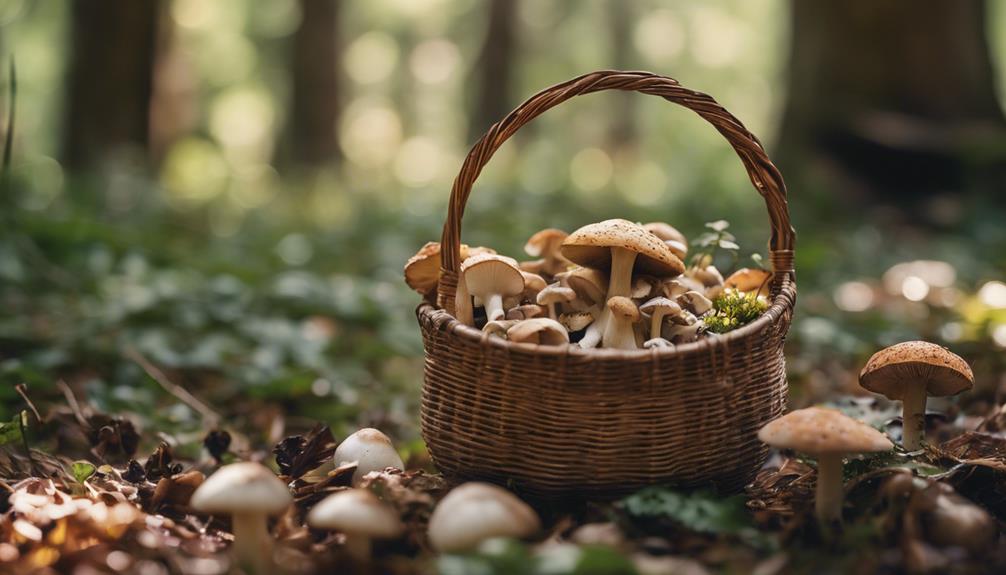
You're about to reveal the secrets of Mississippi's hidden edibles, where the state's rich agricultural landscape yields a treasure trove of wild treats waiting to be foraged. Explore the thriving agritourism scene, discover wild mushrooms, and identify edible fruits and berries like persimmons and blackberries. Learn how to cook with these ingredients and experience the benefits of foraging locally. From preserving your finds to sharing the bounty with others, you'll reveal a world of flavors and connections. As you venture into Mississippi's hidden edibles, get ready to uncover more surprising gems and flavors just beyond the fence. With the **Louisiana foraging guide** as a complementary resource, you’ll expand your knowledge of the broader Southern region’s hidden culinary gifts. From the lush forests to the riverbanks, you’ll find how both states offer a rich diversity of ingredients that can transform any dish. Whether you’re an experienced forager or just beginning, Mississippi’s abundance paired with insights from neighboring Louisiana ensures a flavorful, sustainable experience.
Key Takeaways
- Discover Mississippi's thriving agritourism scene, where you can experience authentic rural life and participate in foraging activities like pumpkin picking.
- Learn mushroom identification tips to distinguish edible species from toxic lookalikes based on characteristics like cap shape, gills, and habitat.
- Identify edible fruits and berries in Mississippi, such as persimmons, muscadine grapes, and blackberries, by recognizing ripe characteristics and habitats.
- Enhance meals with freshness and excitement by experimenting with wild mushrooms, hickory nuts, and persimmons in various dishes that tell a story of the wild.
- Preserve wild treats by freezing, drying, or canning to enjoy year-round and share with others, while appreciating the connection with nature.
Foraging in Mississippi's Agritourism
As you venture into Mississippi's countryside, you'll discover a thriving agritourism scene, where farms like Mitchell Farms near Collins in Covington county invite you to experience the authentic rural life. Founded by Nelda and Dennis Mitchell years ago, this farm has been a popular destination for families and individuals looking to experience the agricultural side of Mississippi.
One day, you can trade in your city shoes for a pair of boots and get ready to get your hands dirty. Mitchell Farms offers a range of activities, including pumpkin picking, which is a great way to spend a day outdoors. As you explore the farm, you'll learn about farm life and enjoy the rural environment.
Agritourism allows you to connect with nature and learn about where your food comes from. Take a day to disconnect from the hustle and bustle of city life and immerse yourself in the simplicity of rural Mississippi. Who knows, you might just discover a new passion!
Wild Mushroom Hunting 101
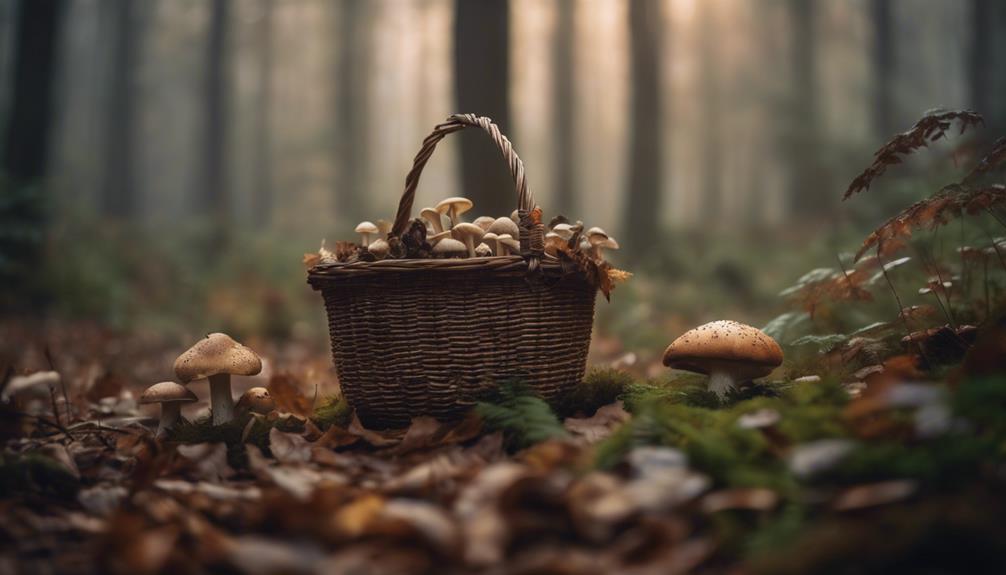
As you venture into the world of wild mushroom hunting, remember that proper identification is crucial for avoiding toxic varieties. You'll need to develop skills to distinguish edible species from their poisonous lookalikes, and understand how to safely forage in your local environment.
In the following sections, you'll learn valuable tips on mushroom identification and safe foraging practices to guarantee a successful and enjoyable hunting experience.
Mushroom Identification Tips
When foraging for wild mushrooms, you must develop a keen eye for detail to distinguish between edible species and their toxic lookalikes. Every day, beginners and experienced foragers alike must be vigilant in their identification techniques to avoid mistakenly picking a poisonous mushroom.
Here are some essential identification tips to keep in mind:
| Characteristic | Edible | Toxic |
|---|---|---|
| Cap Shape | Bell-shaped or convex | Conical or flat |
| Gills | White or light-colored | Greenish or dark-colored |
| Stem Color | White or light-colored | Brightly colored or dark |
| Habitat | Woodland or forest floor | Near decaying matter |
Safe Foraging Practices
How can you guarantee a safe and enjoyable foraging experience, avoiding the risks associated with misidentified mushrooms?
Start by being absolutely sure of the identity of any wild mushroom before consuming it. Misidentification can lead to serious health risks, so it's important to look for key characteristics like gills, spore print color, and overall appearance.
Consider joining a local foraging group or taking a guided tour to learn from experienced foragers and establish safe practices. You'll learn what to avoid, like picking mushrooms near contaminated areas such as roadsides, industrial sites, or places sprayed with chemicals. These areas can contaminate the mushrooms, making them unsafe to eat.
Begin with easily identifiable and commonly found mushrooms like morel mushrooms before progressing to more challenging species. This will help you build your skills and confidence in identifying mushrooms.
Identifying Edible Fruits and Berries
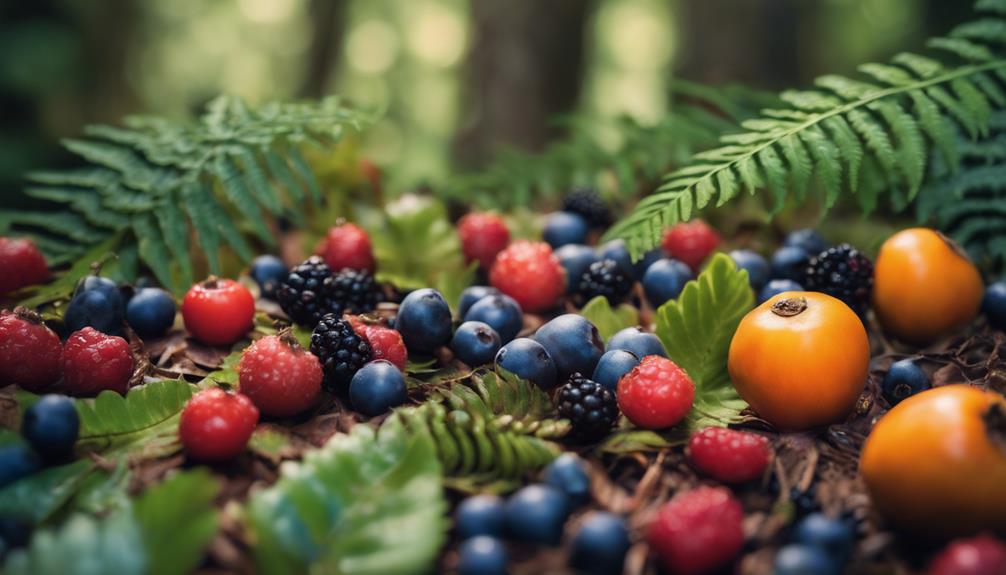
You'll need to learn which characteristics distinguish edible fruits and berries from their inedible or toxic lookalikes to forage safely. It's important to identify the fruits and berries correctly before consuming them to avoid any potential risks. In Mississippi, you can find various edible fruits and berries, including persimmons, muscadine grapes, blackberries, hickory nuts, and pawpaws.
Here's a guide to help you identify some of these edible fruits and berries:
| Fruit/Berry | Characteristics | Harvesting Tips |
|---|---|---|
| Persimmons | Orange or reddish-orange color, sweet and tangy taste | Ripe fruits fall off the tree naturally when ready to be harvested |
| Muscadine Grapes | Thick, dark-colored skin, sweet and juicy pulp | Look for clusters of grapes hanging from vines |
| Blackberries | Dark purple color, sweet and slightly tart taste | Pick when berries are plump and easily come off the stem |
| Hickory Nuts | Brown, globe-shaped nuts with a thick shell | Gather from the ground or lower branches |
| Pawpaws | Green or yellowish-green skin, creamy and sweet pulp | Ripe fruits fall off the tree naturally when ready to be harvested |
Cooking With Wild Ingredients
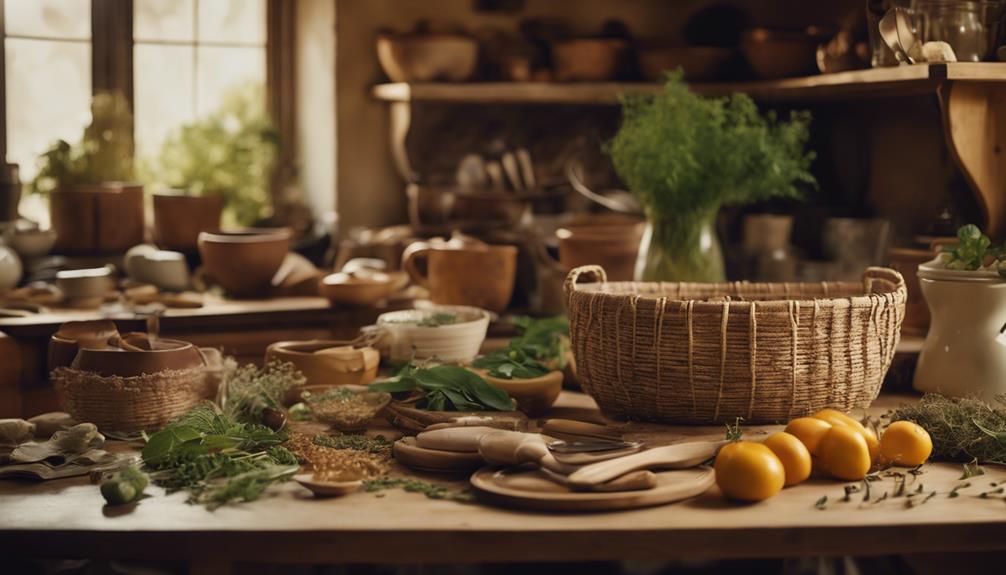
By incorporating foraged foods into your cooking repertoire, you can add a burst of freshness and excitement to your meals, from savory pizzas to sweet desserts. Imagine sharing a meal with friends and family, where every bite tells a story of the wild. Cooking with wild ingredients isn't only delicious but also allows you to connect with nature and appreciate the diverse flavors it provides.
Here are some ways to get started:
- Experiment with wild mushrooms: Add them to your favorite pizza recipe or blend them into a savory soup.
- Incorporate hickory nuts into your baking: Use them in place of traditional nuts for a unique flavor and texture.
- Make a persimmon crisp: Toss sliced persimmons with sugar, flour, and lemon juice, then top with an oat and brown sugar crumble for a sweet and tangy dessert.
The Benefits of Foraging Locally
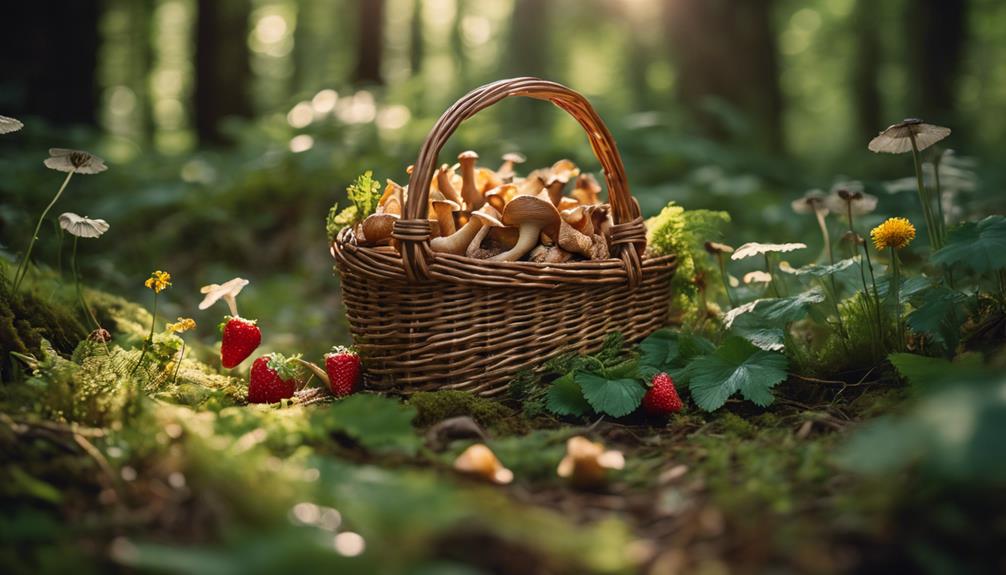
Foraging locally puts you in touch with the freshest, highest-quality wild ingredients, right in your own backyard, and it's an opportunity that's as free as it's fulfilling.
By foraging locally, you'll gain access to superior quality wild foods that are fresh and organic, and you'll develop valuable skills in identifying edible plants and mushrooms. Plus, it's a cost-effective way to gather ingredients for meals – they're free!
Foraging isn't just about the food, though. It's an opportunity to connect with nature and appreciate the abundance of resources available in your local environment. You'll also find that foraging brings people together, whether it's with friends or family, as you enjoy the process of harvesting and cooking wild foods.
As you forage, you'll develop a deeper appreciation for the natural world and the abundance it provides. So, get out there and start foraging – your taste buds, wallet, and sense of connection to nature will thank you!
Mississippi's Hidden Forest Gems
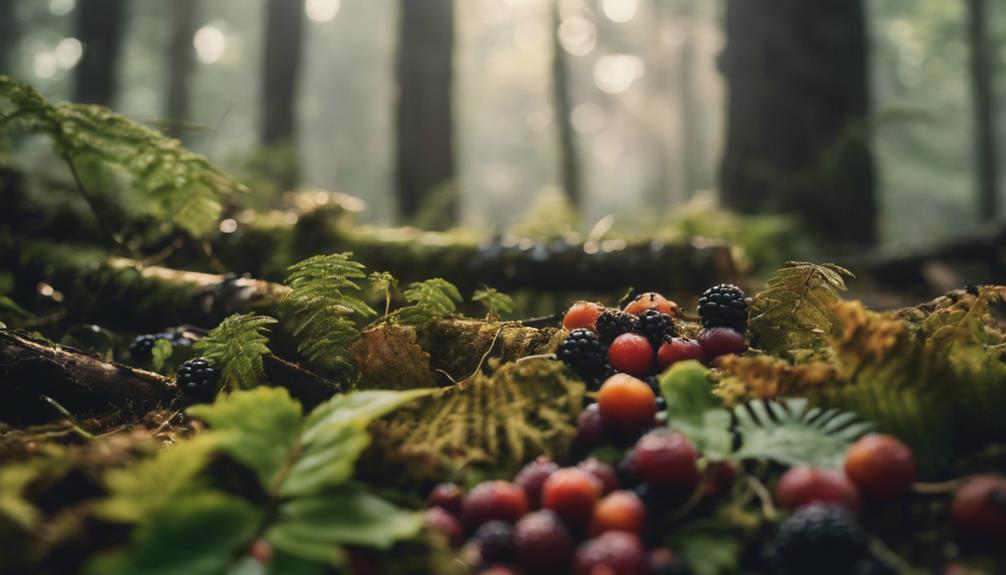
Delving into Mississippi's forests, you'll uncover a treasure trove of hidden gems, from prized black trumpet mushrooms and golden chanterelles to succulent persimmons, pawpaws, and other wild treats waiting to be discovered.
As you wander through the forest, keep an eye out for these edible treasures:
- Falling fruits: Ripe persimmons and pawpaws naturally fall off the tree when they're ready to be harvested, making them easy to spot.
- Nutty delights: Hickory nuts are abundant in Mississippi's forests, providing a tasty and crunchy snack.
- Mushroom magic: Black trumpet mushrooms and golden chanterelles can be found hiding under leaves and logs, waiting to be discovered.
Remember to always properly identify any wild mushrooms and fruits before consuming them to make sure your safety.
Preserving the Harvest Season
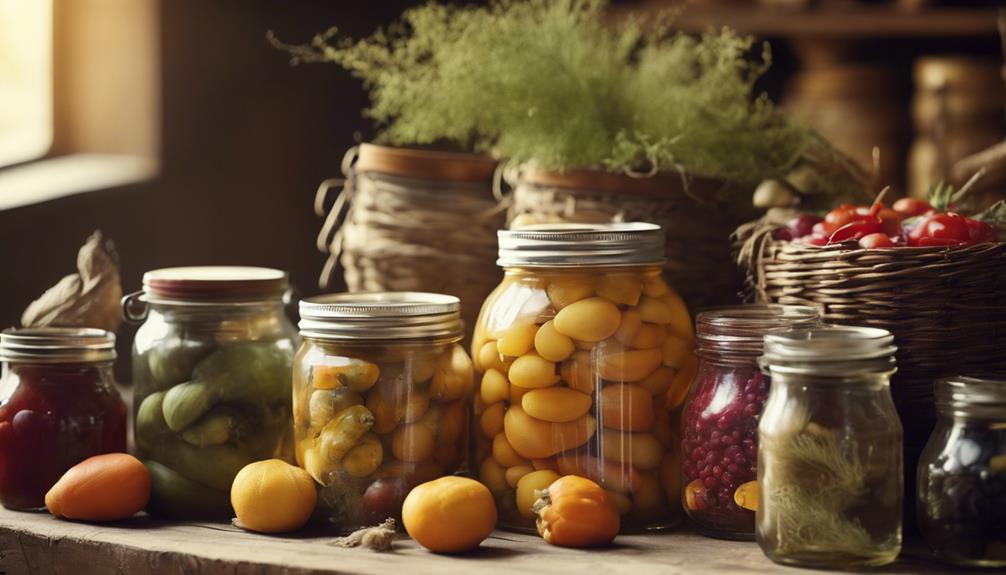
Now that you've foraged for wild treats, it's time to think about preserving the harvest season.
You'll want to learn how to store your finds so you can enjoy them year-round, and that's where preserving techniques come in.
You'll explore methods like freezing, drying, and canning to savor your wild delights whenever you want.
Freezing Fresh Delights
As you gather your wild bounty, freezing becomes a crucial step in preserving the flavors and nutrients of your fresh finds, allowing you to savor the harvest season throughout the year. By freezing your wild treats, you'll be able to enjoy them in a variety of dishes throughout the year, from smoothies to pies and stews.
To freeze your wild treats effectively, follow these simple steps:
- Flash freeze individual pieces: This prevents clumping and guarantees that each piece freezes evenly.
- Label and date your frozen treats: This guarantees easy identification and rotation of stock, so you can use the oldest items first.
- Store frozen treats in airtight containers: This keeps them fresh and prevents freezer burn.
Drying for Later Use
You can preserve your wild treats for later use by drying them, a simple yet effective way to retain their flavors and nutrients throughout the year. This method is particularly useful for fruits like persimmons and berries, which can be dehydrated to preserve their sweetness and nutritional value.
Dried mushrooms like black trumpets and golden chanterelles can also be stored for months, ready to be rehydrated and added to soups, stews, or sauces.
To dry your wild finds, you can use the sun or a dehydrator. Both methods are effective, but a dehydrator provides more control over the drying process. Once dried, your wild treats can be stored in airtight containers, waiting to be rehydrated and used in a variety of dishes.
Canning Summer Flavors
Beyond drying, canning is another excellent way to preserve the flavors of the harvest season, allowing you to savor Mississippi's wild treats throughout the year.
By canning summer flavors, you'll be able to enjoy the fruits of your labor (literally!) long after the harvest season has ended.
To get started, you'll need to decide which method is best for you: water bath canning or pressure canning. Both methods have their own set of rules and guidelines, so be sure to do your research before diving in.
Here are just a few benefits of canning summer flavors:
- Extended shelf life: Canning helps extend the shelf life of your harvested goods, allowing you to enjoy them for months to come.
- Year-round enjoyment: With canned goods, you can savor the flavors of summer even in the dead of winter.
- Convenient and gift-worthy: Canned goods make great gifts and are super convenient for quick meal prep.
Sharing the Bounty of Nature
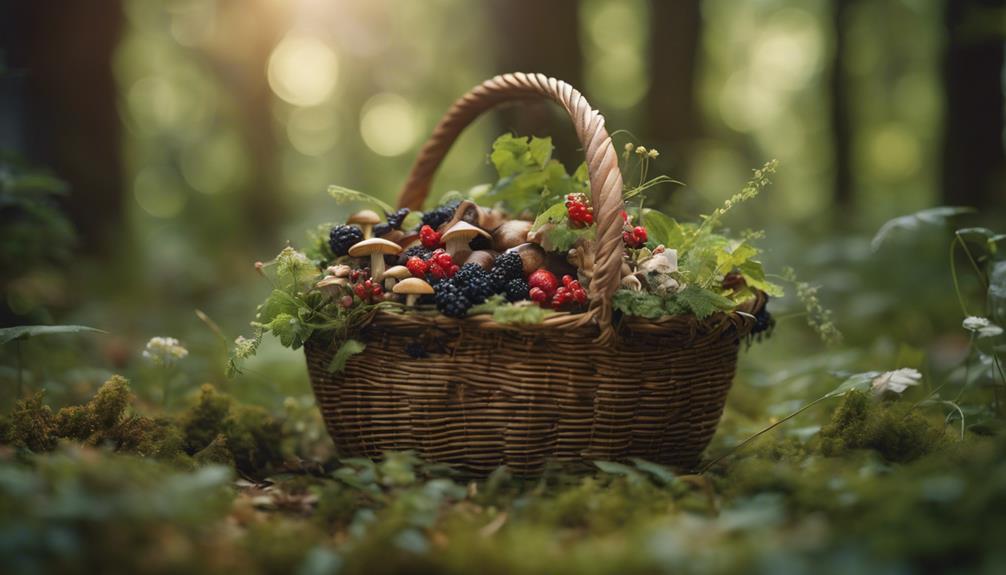
By foraging for Mississippi's hidden gems, you can uncover a treasure trove of wild treats that will elevate your culinary creations and strengthen bonds with friends and family.
As you explore the state's natural bounty, you'll discover an array of flavors and textures just waiting to be shared.
From the earthy richness of black trumpet mushrooms to the sweetness of persimmons, each wild ingredient offers a unique opportunity to connect with loved ones over a delicious meal.
Frequently Asked Questions
How Do You Forage Wild Edibles?
You start by researching and learning about the types of wild edibles in your area, then head outdoors to identify and gather them, making sure to follow safe foraging practices to avoid misidentification.
How to Find Edible Plants in the Wild?
As you venture into the wild, your eyes are the keys that reveal nature's treasure chest, and you'll find edible plants hiding in plain sight, like blackberries and persimmons, ripe for the picking.
What Berries Are Edible in Mississippi?
You're wondering what berries are edible in Mississippi? Well, you're in luck! You can forage for blackberries, muscadine grapes, persimmons, and pawpaws, all native to the state and packed with natural sweetness and nutrients.
How Do You Know if Something Is Edible in the Wild?
'Are you willing to take a bite of uncertainty? You shouldn't be! To guarantee safety, you must be 100% sure of a plant's edibility, consulting field guides, experts, and reliable sources to avoid potential health risks.'
Conclusion
As you wander through Mississippi's hidden forests, you stumble upon a bounty of wild treats, and it's as if the state's agritourism is sharing a secret with you.
You've discovered the thrill of foraging, and it's only the beginning. With every wild mushroom, fruit, and berry, a world of flavors and possibilities unfolds.
You're no longer just a visitor, but a participant in nature's grand symphony. Savor the taste of Mississippi's hidden edibles, and let the rhythm of the wild guide you on your next adventure.
How to Forage
Minnesota Foraging Fun: Discover Wild Edibles Everywhere!
Savor the flavors of Minnesota's wild edibles, from mushrooms to berries, and uncover the secrets of foraging in the state's diverse landscapes.
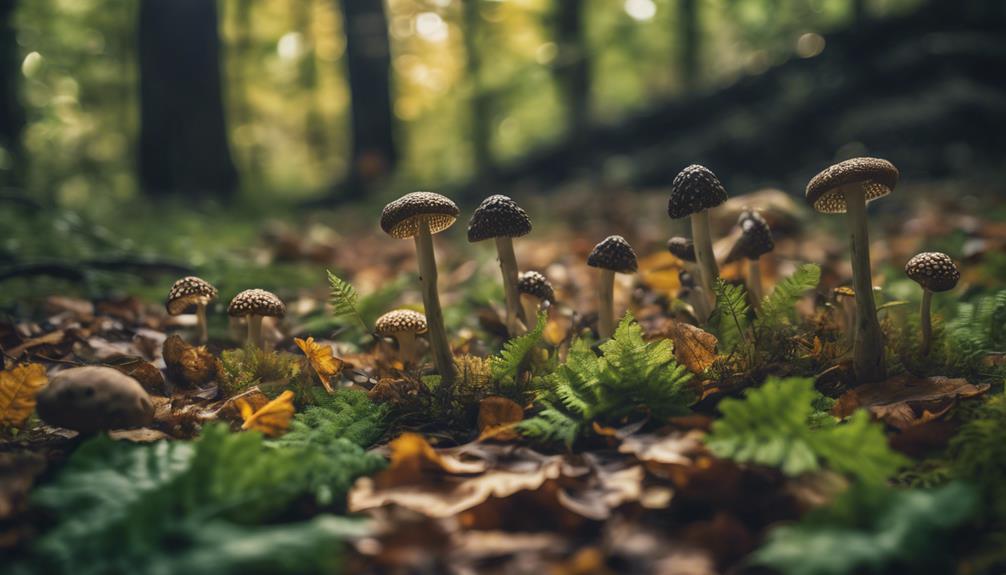
You're surrounded by a treasure trove of wild edibles in Minnesota, from succulent mushrooms to tangy berries, waiting to be discovered and devoured. Diverse ecosystems offer a variety of wild foods, including morel mushrooms, chokecherries, and watercress. To guarantee a fun and safe foraging experience, remember to cross-reference multiple sources for plant identification, wear protective gear, and respect protected areas. As you explore Minnesota's landscapes, from forests to prairies, you'll uncover the rich flavors and benefits of wild edibles. Continue on this journey to uncover the secrets of foraging in Minnesota and discover the hidden gems in the wild.
Key Takeaways
- Explore Minnesota's diverse ecosystems, from forests to wetlands, to discover a variety of wild edibles like morel mushrooms and chokecherries.
- Ensure foraging safety by cross-referencing multiple sources, wearing protective gear, and joining local foraging groups to learn from experienced foragers.
- Practice sustainable foraging by harvesting only what you need, respecting protected areas, and avoiding invasive species to maintain native plant diversity.
- Discover wild edibles in different landscapes, including forests, prairies, wetlands, lakeshores, and even urban areas, each with their unique offerings.
- Preserve and prepare your wild finds by cleaning, trimming, cooking, pickling, drying, freezing, or canning to enjoy your bounty throughout the year.
Discovering Minnesota's Wild Edibles
As you journey into Minnesota's vast wilderness, you'll uncover a treasure trove of wild edibles waiting to be discovered. The state's diverse ecosystems, ranging from forests to wetlands and even urban areas, offer a wide variety of wild foods for you to forage. Among the many offerings, you’ll find an abundance of berries, mushrooms, and edible greens that flourish throughout the seasons. Foraging enthusiasts often compare Minnesota’s wild edibles to those found in other regions, such as Massachusetts wild edibles, where coastal and forest ecosystems foster a similar but unique blend of foraging opportunities. Whether you’re a seasoned forager or just starting out, both states offer a chance to reconnect with nature’s bounty while learning about their distinct edible landscapes.
You'll find an abundance of delicious and nutritious treats, including mushrooms, berries, and greens. Morel mushrooms, chokecherries, and watercress are just a few examples of the many wild edibles that thrive in Minnesota.
As you explore the state's natural areas, you'll have the opportunity to connect with nature, learn about local ecosystems, and enjoy fresh, sustainable foods. Minnesota's wild edibles aren't only a treat for your taste buds but also a way to live more sustainably.
Foraging Safety and Best Practices
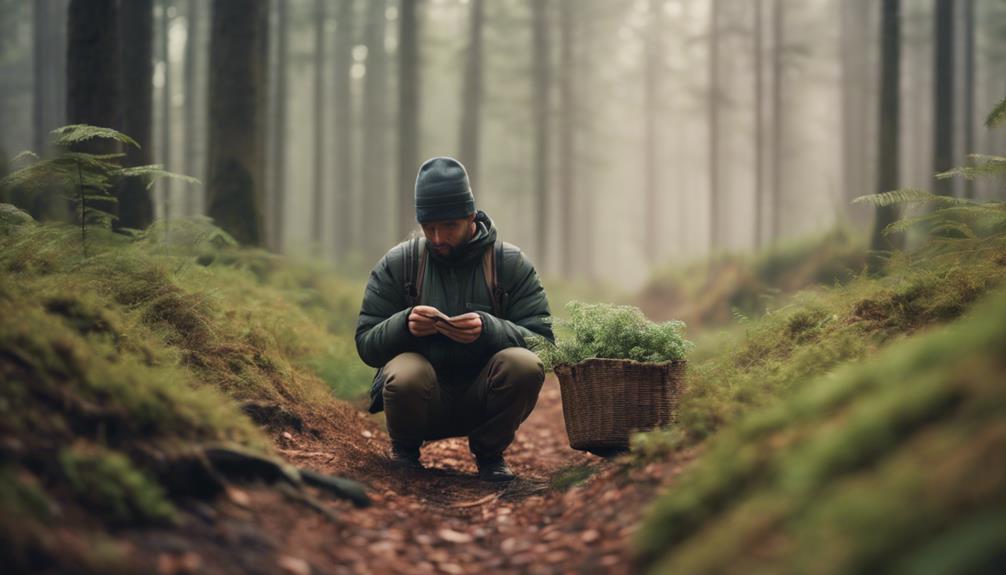
As you start your foraging journey, remember that safety should always be your top priority.
You'll need to know your plants inside and out, and be aware of any pests that might be lurking in the wild.
Know Your Plants
You'll greatly decrease your risk of misidentification by cross-referencing multiple sources, including plant identification guides, online forums, and expert foragers, to make sure you're picking the right plants. This is especially important when dealing with wild mushrooms, where misidentification can be deadly. Always carry a field guide with you, and don't rely on a single source for identification.
| Tool | Description | Importance |
|---|---|---|
| Plant Identification Guide | A detailed guide to identifying plants | Essential for accurate identification |
| Gloves | Protective gear for harvesting | Prevents skin irritation and injury |
| Local Foraging Groups | Join online forums or local workshops | Learn from experienced foragers and gain confidence |
Be Aware of Pests
When venturing into the wild to forage, pesky critters like ticks, mosquitoes, and poison ivy lurk in the shadows, waiting to ruin your outdoor adventure. When searching for wild edibles, being mindful of these pests is crucial to prevent bites and skin irritations.
To minimize encounters, wear proper clothing like long sleeves, pants, and closed-toe shoes. Apply insect repellents containing DEET or picaridin to deter mosquitoes and ticks. After foraging, take a few minutes to inspect yourself and your clothing for any unwanted hitchhikers.
Understanding the common pests in your area can help you take necessary precautions and enjoy a safer outdoor experience.
Sustainable Foraging in Minnesota
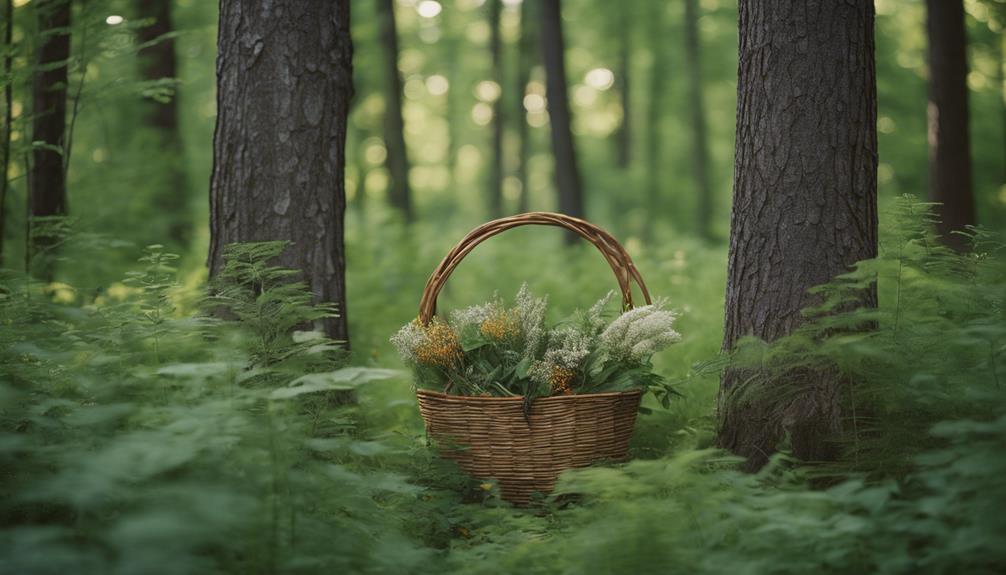
As you venture into Minnesota's great outdoors to forage for wild edibles, it's important to remember that sustainable foraging practices are vital for preserving the natural balance.
You'll want to adopt responsible harvesting practices, conserve wild edibles for future generations, and support local ecosystems.
Responsible Harvesting Practices
By adopting responsible harvesting practices, you secure that Minnesota's wild edibles remain abundant for future generations while preserving the state's ecosystem balance.
As a forager, prioritizing sustainability is crucial to guarantee the longevity of the state's native plants and ecosystems. This means harvesting only what you need, respecting protected areas, and adhering to local regulations.
Here are some key considerations for responsible harvesting practices in Minnesota:
- Harvest sustainably: Only take what you need, and avoid over-harvesting to maintain ecosystem balance.
- Respect protected areas: Avoid foraging in protected areas, such as national parks and wildlife reserves, to preserve sensitive ecosystems.
- Understand invasive species: Be aware of invasive species and avoid spreading them to maintain native plant diversity.
- Consider climate change: Be mindful of how climate change may impact foraging locations and adapt your practices accordingly.
Wild Edibles Conservation
You're likely familiar with the concept of conservation, and sustainable foraging in Minnesota is no exception, focusing on preserving wild edibles for both wildlife and future generations. As you venture into the world of foraging, it's essential to prioritize conservation efforts to ensure the long-term availability of these natural treasures.
| Sustainable Foraging Practices | Benefits |
|---|---|
| Harvesting only what you need | Minimizes waste and preserves resources |
| Following local regulations | Protects sensitive ecosystems and endangered species |
| Respecting protected areas | Preserves biodiversity and maintains ecosystem balance |
| Avoiding over-harvesting | Ensures continued growth and availability |
| Supporting local conservation efforts | Strengthens community involvement and education |
Local Ecosystem Support
How do your foraging practices impact the local ecosystem in Minnesota?
As a forager, you play an important role in preserving the natural habitats and biodiversity of the region. By adopting sustainable foraging practices, you help maintain the delicate balance of plant and animal populations. This not only guarantees the long-term availability of wild edibles but also contributes to environmental conservation efforts.
Here are some ways you can support local ecosystems through sustainable foraging:
- Preserve natural habitats and biodiversity
- Maintain the delicate balance of plant and animal populations
- Guarantee the long-term availability of wild edibles
- Contribute to environmental conservation efforts by respecting foraging regulations and protected areas
Identifying Wild Mushrooms and Plants
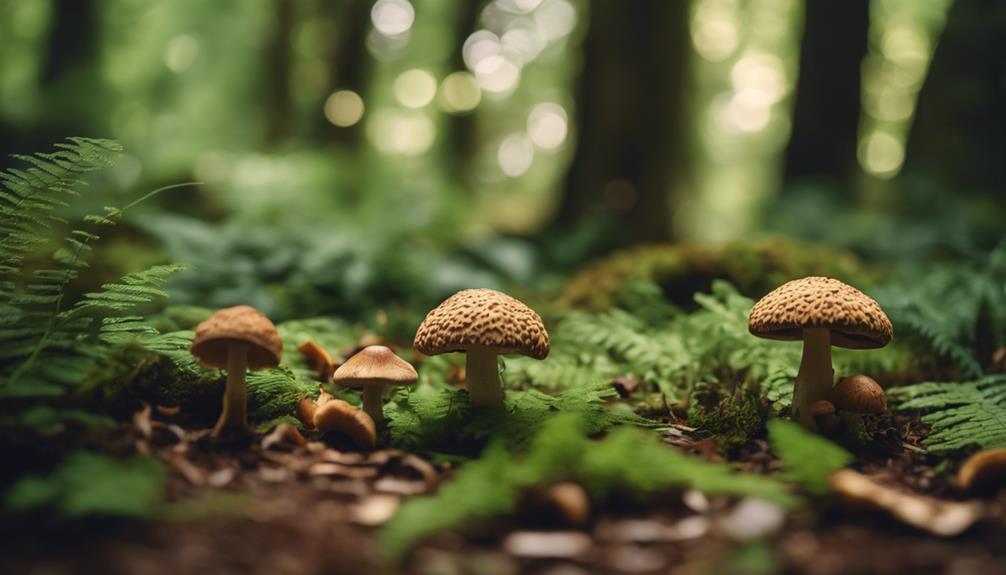
As you begin the exciting journey of identifying wild mushrooms and plants, comprehending the intricacies of mushroom anatomy is vital for safe and successful foraging. You'll need to recognize features like caps, stems, teeth, umbos, and pores to distinguish between edible and toxic species.
The University of Minnesota and local Mycological Society are valuable resources to tap into for guidance and expert knowledge.
Different mushrooms have unique relationships with trees and roots in their environment. Did you know that mushrooms exist underground as mycelium, with the visible part being the fruiting body? It's essential to differentiate between common, safe edibles like golden chanterelles and potentially toxic varieties like the destroying angel.
Foraging in Minnesota offers rich hunting grounds for diverse mushrooms, influencing the culinary landscape with unique flavors. By understanding mushroom anatomy and species-specific traits, you'll be well on your way to enjoying the thrill of foraging for wild edibles in Minnesota.
Wild Edibles in Different Seasons
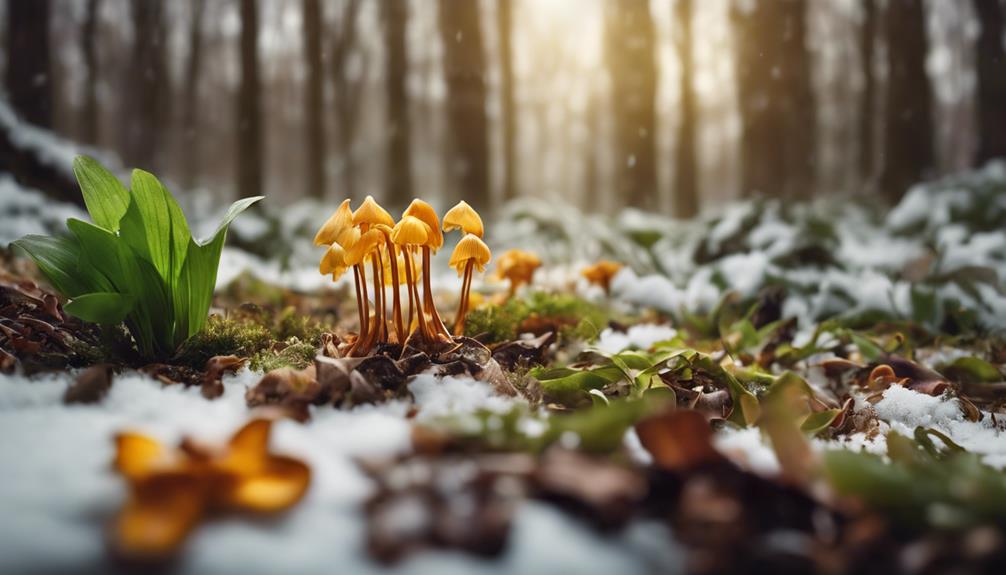
Explore the changing landscape of Minnesota and discover the diverse array of wild edibles that can be found throughout the year, from spring greens to winter fungi. As you venture out, you'll find that each season brings its own unique flavors and nutritional benefits.
Here are some of the wild edibles you can find in Minnesota and Wisconsin:
- In spring, look for watercress, ramps, and dandelion greens.
- Summer brings an abundance of berries like strawberries, blueberries, and raspberries.
- Fall is the time for wild mushrooms like chanterelles, hen of the woods, and chicken of the woods.
- In winter, search for chaga fungus, rosehips, and other hardy edibles.
Foraging in Minnesota's Various Landscapes
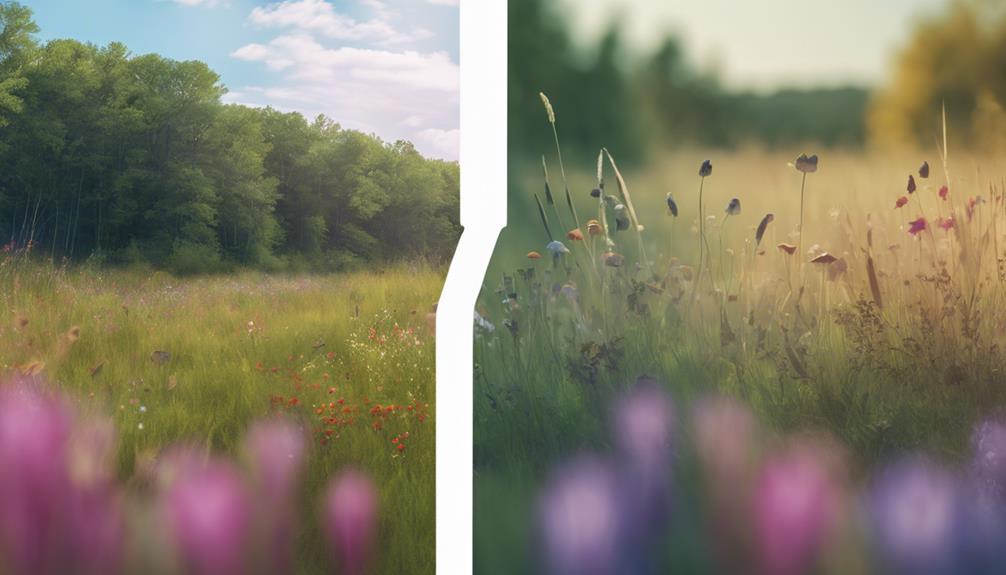
You'll find that Minnesota's diverse landscapes, from forests to prairies, wetlands, and lakeshores, offer a wide range of wild edibles waiting to be discovered. Each region presents unique opportunities to discover wild edibles throughout the changing seasons.
| Landscape | Wild Edibles |
|---|---|
| Forests | Mushrooms, wild berries, and edible roots |
| Prairies | Wildflowers, grasses, and edible seeds |
| Wetlands | Cattails, water lilies, and aquatic plants |
| Lakeshores | Beach plums, wild cherries, and shoreline greens |
| Urban areas | Wild herbs, edible weeds, and fruit trees |
From mushroom hunting in the North Woods to gathering wild berries along the North Shore, Minnesota's diverse landscapes offer endless opportunities for foraging. Urban foraging in cities like Minneapolis and St. Paul allows residents to find edible plants in parks, gardens, and green spaces. Minnesota's foraging scene is enriched by the abundance of wild edibles in state parks, nature reserves, and rural areas. With a little knowledge and exploration, you can uncover the hidden gems of Minnesota's wild edibles.
Preserving and Preparing Wild Finds
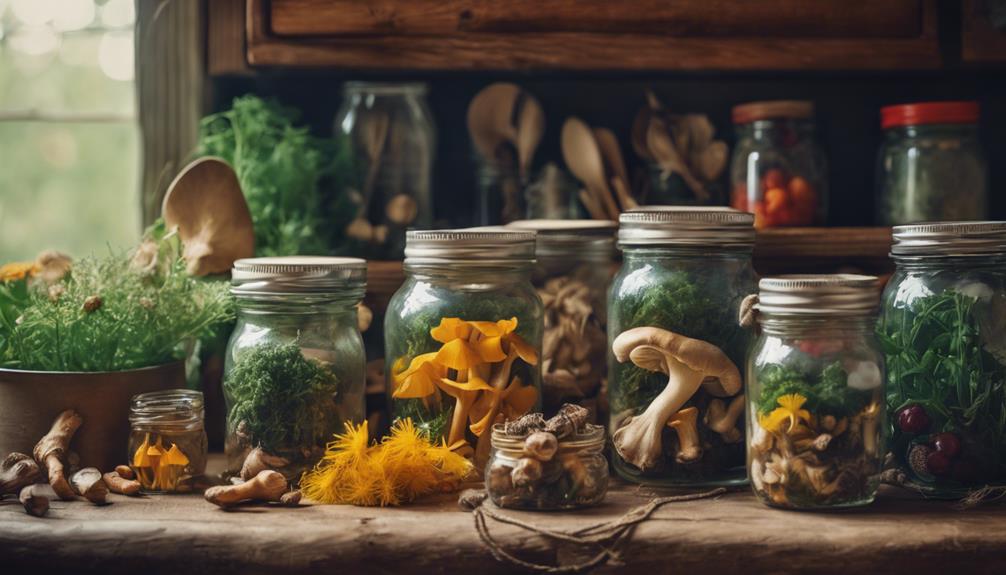
Once you've found your wild edibles, it's essential to preserve and prepare them to enjoy their flavors and textures throughout the year. Finding wild edibles is only half the fun – preserving them is just as vital to guarantee you can savor your discoveries year-round.
To get started, you'll want to clean, trim, and cook your wild finds to enhance their flavors and guarantee safety. Here are some ways to preserve your wild edibles:
- Pickle or dry them to extend their shelf life
- Freeze wild mushrooms and berries to preserve their freshness
- Can wild vegetables like ramps or fiddlehead ferns for long-term storage
- Create unique preserves from wild fruits like chokecherries or serviceberries
Frequently Asked Questions
Is It Legal to Forage in Minnesota?
You're wondering if it's legal to forage in Minnesota? Generally, yes, you can forage on public lands for personal use without a permit, but be aware of private land restrictions and protected species regulations.
What States Is Foraging Illegal?
"As you venture into the world of foraging, beware of the shadows of illegality lurking in some states. You'll find that in states like New York and California, foraging is illegal in certain protected areas, so check local regulations to avoid getting caught in the crosshairs."
How Do You Forage Wild Edibles?
You start foraging wild edibles by researching local species, grabbing a guidebook, and heading outdoors. You'll identify plants, practice sustainable harvesting, and respect nature, ensuring a fun and responsible foraging experience.
What Are the Wild Edibles in the Midwest?
You're about to uncover a treasure trove of flavors! In the Midwest, you'll find a bounty of wild edibles, including morel mushrooms, ramps, wild berries, and watercress, just waiting to be discovered and devoured!
Conclusion
As you venture into Minnesota's wild, the scent of earthy mushrooms and sweet berries lingers, tantalizing your senses.
With each foraging trip, the thrill of discovery grows, and your connection to the land deepens.
The state's diverse landscapes unfold like a treasure map, revealing hidden gems of flavor and nutrition.
Embrace the adventure, and let the wild edibles of Minnesota become your ultimate treasure.
How to Forage
Michigan’s Wild Bounty: How to Forage Like a Pro!
Navigate Michigan's diverse ecosystems to uncover the hidden gems of wild edibles, but beware of toxic lookalikes lurking in the shadows.
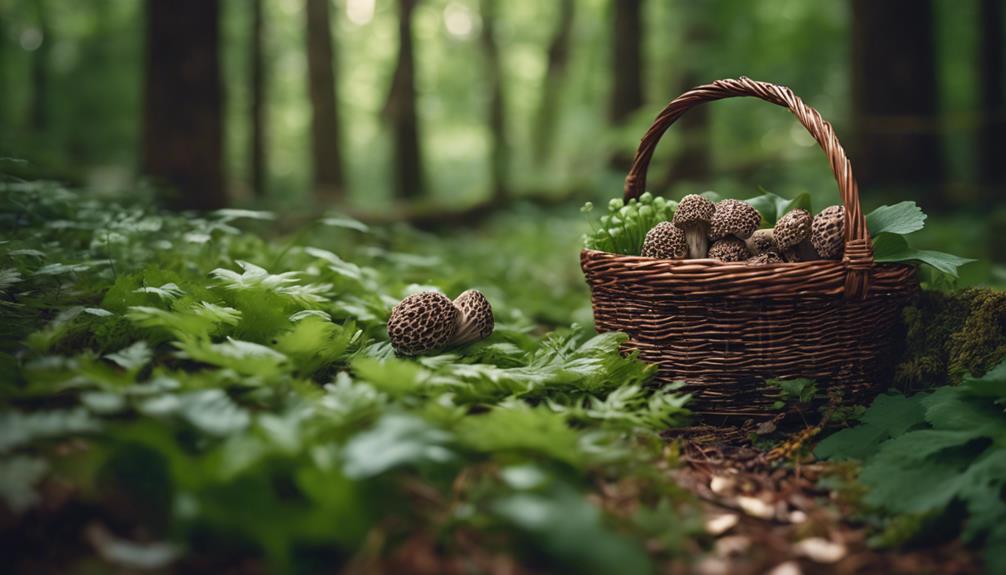
You're prepared to access Michigan's wild bounty! From mastering fundamental foraging skills to recognizing edible plants and avoiding toxic lookalikes, you'll discover the secrets to sustainable harvesting. Explore Michigan's diverse ecosystems, where you'll find hidden gems like morels, ramps, and thimbleberries. Learn how to identify, harvest, and cook with wild edibles, accessing their nutritional benefits. Plus, get tips on sustainable foraging techniques, cooking methods, and more. As you venture into the world of foraging, you'll uncover the rich flavors and nutritional treasures of Michigan's wild bounty – and there's so much more to discover. As you expand your skills, you might even consider venturing beyond Michigan to explore neighboring states like Wisconsin, where foraging opportunities abound. Learning **how to forage in Wisconsin** opens up a whole new world of wild edibles, including unique species that thrive in its varied landscapes. Whether you’re foraging in Michigan or learning **how to forage in Wisconsin**, the journey will continually deepen your connection to nature and its seasonal abundance.
Key Takeaways
- Master fundamental skills like recognizing edible plants, distinguishing lookalikes, and understanding seasonal cycles and habitats to forage like a pro in Michigan.
- Identify Michigan's unique wild edibles like morels, ramps, and thimbleberries, and learn specific habitats and seasons for foraging.
- Develop confidence in plant identification and safety by understanding leaf shape, flower color, and root system, and learning about toxic look-alikes.
- Adapt harvesting practices to Michigan's changing seasons, focusing on abundance and variety to reap nutritional benefits from vitamin-rich wild edibles like dandelions and berries.
- Practice sustainable foraging techniques, such as selective harvesting and avoiding over-harvesting, to promote environmental conservation and ecosystem health.
Foraging Fundamentals 101
To kick-start your foraging journey in Michigan, mastering the fundamental skills of identifying and harvesting wild edibles is essential for ensuring a safe and sustainable foraging experience. You'll want to focus on recognizing edible plants, which is a pivotal aspect of Foraging Fundamentals 101.
Learning to identify these plants will help you avoid mistakenly picking something inedible or even toxic. You'll discover the skills to distinguish between lookalikes, understand the importance of proper plant identification, and develop the confidence to forage with ease.
In Foraging Fundamentals 101, you'll also learn about seasonal cycles and habitats, essential knowledge for finding the right spots to forage. You'll understand how to harvest edible plants sustainably, ensuring that the ecosystem remains balanced.
By grasping these fundamental skills, you'll be well on your way to becoming a proficient forager, capable of finding and preparing delicious wild edibles in Michigan. Remember, proper identification and ethical harvesting practices are key to a successful and sustainable foraging experience.
With Foraging Fundamentals 101, you'll gain the knowledge and skills necessary to enjoy the bounty of Michigan's wild edibles.
Michigan's Edible Plant Landscape
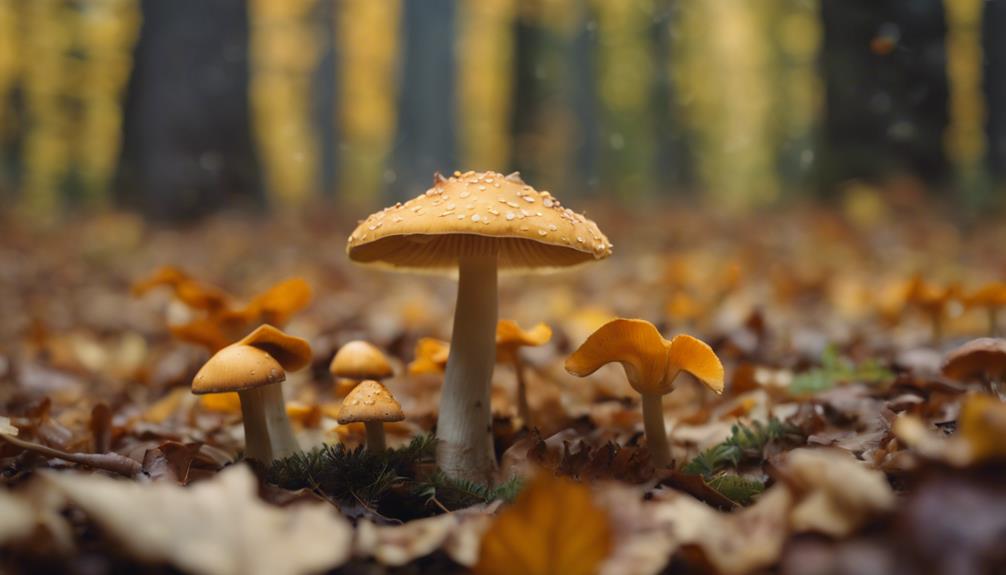
As you explore Michigan's edible plant landscape, you'll discover a world of flavors and textures waiting to be uncovered.
From the forest floor to the woodland canopy, the state's diverse landscape is home to a wide range of delicious and nutritious edibles.
Get ready to uncover the secrets of Michigan's woodland delicacies, learn how to forage by season, and uncover the hidden gems of the forest floor.
Woodland Delicacies Abound
Michigan's woodlands burst with an incredible array of edible treasures, from the prized morel mushrooms and pungent ramps to the sweet and succulent pawpaws, waiting to be discovered by intrepid foragers. As you venture into the forest, you'll find a wealth of wild berries, including serviceberries, thimbleberries, and wild blueberries. These delicious treats are ripe for the picking, but a thorough understanding of the plant habitats and growth cycles is crucial for a successful harvest.
| Plant | Habitat | Harvest Season |
|---|---|---|
| Morels | Rich soil, deciduous forests | Spring |
| Ramps | Moist, woodland areas | Early spring |
| Pawpaws | Rich soil, woodland edges | Late summer |
| Serviceberries | Open woodlands, meadows | Summer |
| Thimbleberries | Woodland edges, streams | Summer |
Forest Floor Foraging
Beyond the trees' towering canopies, your foraging adventure begins on the forest floor, where a tapestry of edible plants awaits discovery.
As you venture into Michigan's forest, you'll uncover a diverse array of edible wild plants, including Wild Leeks (Ramps) and Thimbleberry. To successfully forage on the forest floor, it's important to understand the habitats and growth cycles of these plants.
You'll need to develop a keen eye for identification, as some toxic look-alikes can masquerade as edible wild plants. Wild Leeks, a popular choice among foragers, add a delicious onion-garlic flavor to dishes.
When you do find edible plants, proper processing and storage techniques are essential to keep them fresh and safe for consumption. By mastering these skills, you'll reveal the secrets of Michigan's forest floor, where a world of edible wild delights awaits.
As you explore this uncharted territory, remember to respect the land, harvest sustainably, and always prioritize your safety.
Wild Edibles by Season
You'll find that Michigan's wild edibles are scattered throughout the year, with each season bringing its unique offerings to the foraging table. As you explore the state's edible landscape, you'll discover that each time of year presents new opportunities to forage for delicious and nutritious wild edibles.
In the spring, you can search for wild leeks, ramps, and morel mushrooms, which add a pungent flavor to any dish.
Summer brings an abundance of juicy berries like raspberries, blueberries, and blackberries, perfect for snacking or baking.
As fall arrives, you can forage for nuts like walnuts and hickory nuts, as well as persimmons and pawpaws, which make great additions to savory dishes.
Even in the winter, Michigan's wild edibles persist. You can forage for evergreen needles or wintergreen berries, which offer unique flavors to add to your recipes.
Plant Identification and Safety
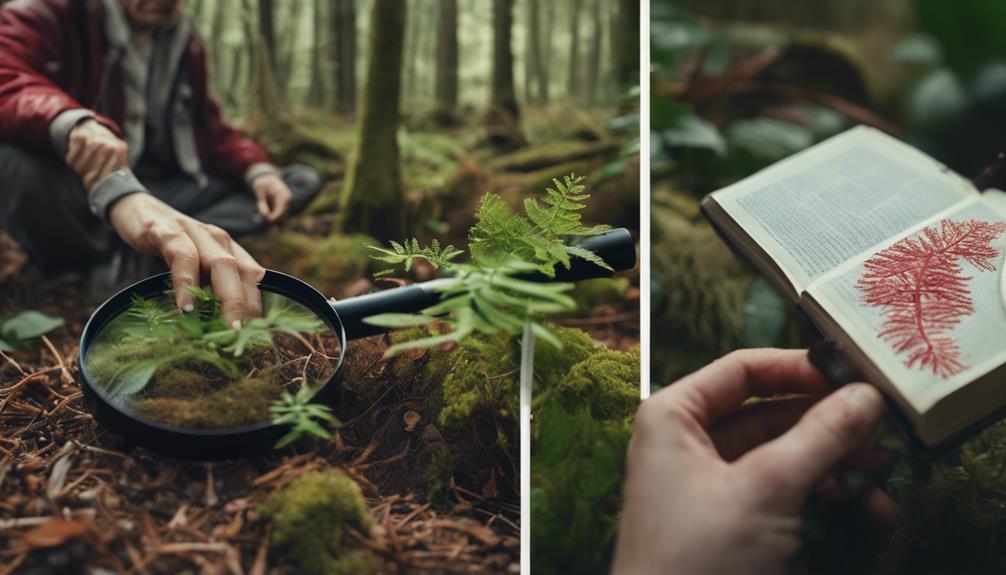
When venturing into the world of foraging, proper plant identification is key to avoiding the dangers of mistakenly consuming toxic look-alikes. You must understand that accurately identifying edible plants is essential for a safe and successful foraging experience. To do this, you'll need to familiarize yourself with plant parts like leaf shape, flower color, and root system.
Here's a breakdown of what to look for in three common wild edibles:
| Plant | Leaf Shape | Flower Color |
|---|---|---|
| Wild Strawberry | Triangular | White |
| Wild Blueberry | Oval | Pink |
| Burdock | Heart-shaped | Purple |
Harvesting Wild Foods Seasonally
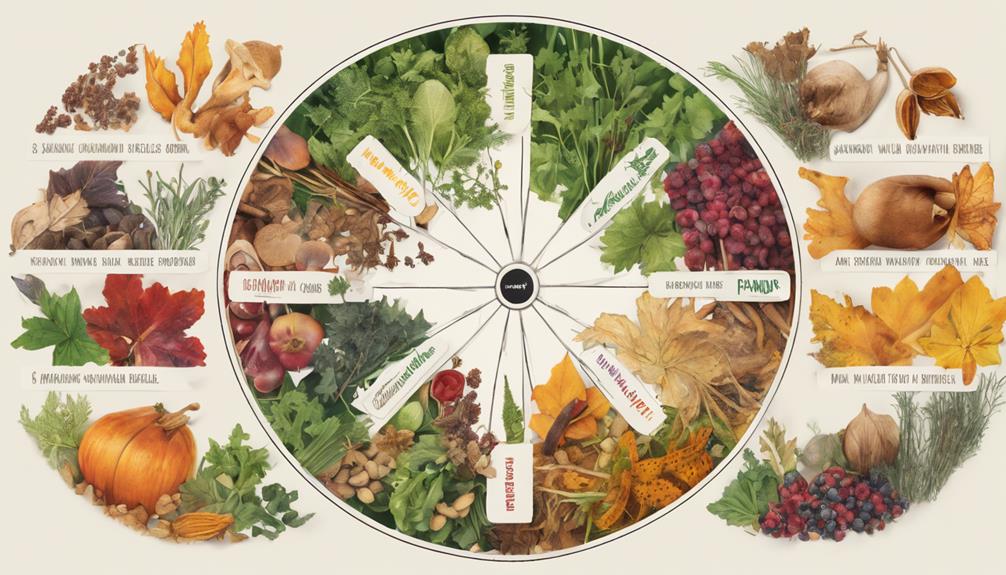
How do you maintain a steady supply of fresh, nutritious wild foods throughout the year, despite Michigan's changing seasons?
The answer lies in understanding the seasonal cycles of wild plants and adjusting your harvesting practices accordingly. In Michigan, different wild foods are available for foraging based on the season. For example, morel mushrooms are abundant in the spring, while berries ripen in the summer.
By foraging seasonally, you can enjoy a wide range of flavors and nutritional benefits throughout the year. Seasonal variations impact the availability and quality of wild foods, so it's essential to adapt your foraging strategies to match the changing landscape.
Nutritional Benefits of Foraging
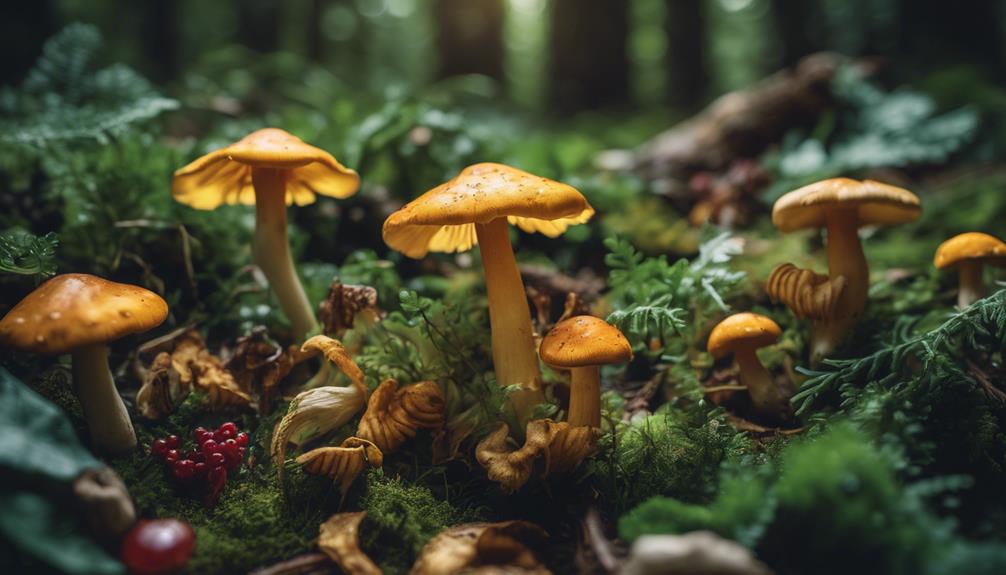
As you explore the world of foraging, you'll discover that wild edibles are packed with vitamins, minerals, and antioxidants that can elevate your health to the next level.
By incorporating these nutrient-dense foods into your diet, you'll be able to access their incredible nutritional benefits.
From vitamin-rich wild edibles to mineral-dense foraged foods and antioxidant powerhouses, you're about to reveal the secrets to a healthier, more balanced you.
Vitamin-Rich Wild Edibles
You can supercharge your diet with a wealth of vitamin-rich wild edibles, from dandelions and nettles to berries, that are packed with essential nutrients. These wild foods offer a diverse range of vitamins, including C, A, and K, as well as minerals like iron and calcium. By incorporating these wild edibles into your diet, you can boost your intake of antioxidants, fiber, and phytonutrients.
| Wild Edible | Nutritional Benefits |
|---|---|
| Dandelion | Rich in vitamins A, C, and K, and minerals like potassium and iron |
| Nettles | High in vitamins A, C, and K, and minerals like calcium and iron |
| Wild Garlic | Rich in vitamins C and B6, and minerals like potassium and manganese |
Incorporating these vitamin-rich wild edibles into your diet can have a significant impact on your overall well-being and nutritional intake. Wild garlic, chickweed, and other foraged foods are known for their immune-boosting properties and health benefits. By foraging for these wild foods, you can enhance your health and nutrition, and experience the benefits of a more balanced diet.
Mineral-Dense Foraged Foods
When foraging for wild edibles, you'll uncover a treasure trove of mineral-dense foods that can greatly enhance your intake of essential nutrients like iron, calcium, and magnesium. These nutrients are often lacking in our modern diets, but foraged foods can help bridge the gap.
Wild berries, for instance, are a great source of manganese, a mineral essential for bone health and metabolism. Mushrooms, another common foraged food, are rich in copper, which supports immune function and connective tissue health.
By incorporating these mineral-dense foods into your diet, you can promote excellent health and well-being. Foraging provides an opportunity to diversify your diet with nutrient-rich wild plants that can supplement a balanced diet with essential minerals not commonly found in processed foods.
Antioxidant Powerhouses Found
Foraging for wild edibles like berries and mushrooms releases a powerful arsenal of antioxidants that can help combat oxidative stress and inflammation in your body.
As you venture into the world of foraging, you'll discover that wild plants are packed with antioxidants that can boost your overall health. These antioxidant powerhouses can help fight off chronic diseases and even support heart health.
By consuming wild foods, you'll introduce a variety of antioxidants into your diet that can help reduce oxidative stress and inflammation. This, in turn, can lead to a stronger immune system and improved overall health.
Compared to cultivated foods, wild edibles offer higher levels of vitamins, minerals, and phytonutrients, making them a nutritional powerhouse.
Sustainable Foraging Techniques
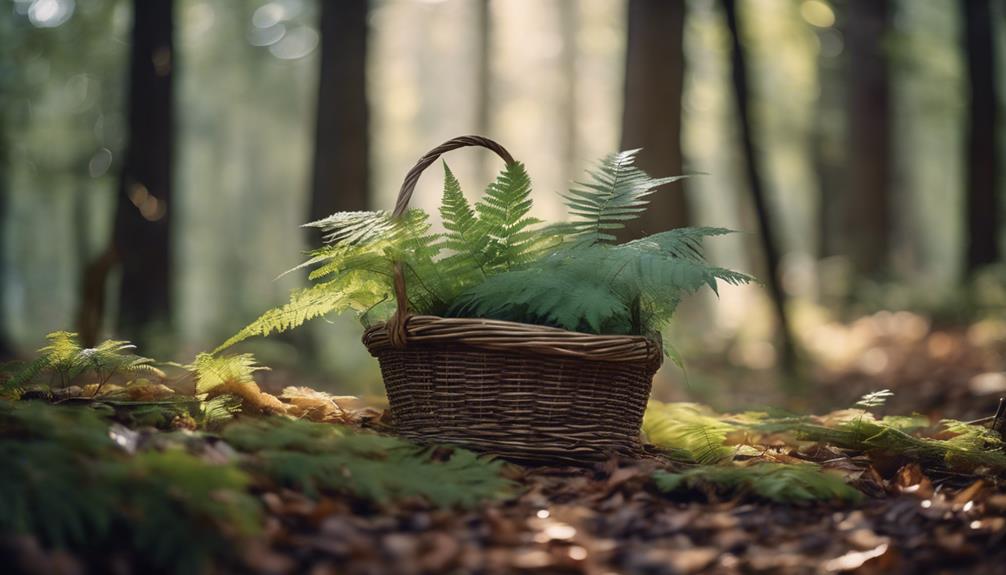
By embracing sustainable foraging techniques, individuals can guarantee that their wild food harvests don't harm the environment, and instead, contribute to the preservation of natural resources for future generations.
When you're out foraging for edible greens like dandelion or chicory, it's crucial to prioritize sustainable methods. This means being selective in your harvesting, avoiding over-harvesting, and respecting plant populations. By doing so, you'll make sure that the ecosystems and wildlife habitats remain healthy and thriving.
Sustainable foraging techniques not only promote environmental conservation but also contribute to biodiversity, ecosystem health, and the longevity of natural resources.
As you explore Michigan's wild bounty, remember that responsible harvesting practices are key to enjoying the benefits of wild foods while preserving the environment. By adopting sustainable foraging techniques, you'll be contributing to a healthier planet for generations to come.
Cooking With Wild Edibles

As you've mastered the art of sustainable foraging, now it's time to get creative in the kitchen, where the real magic happens, and your wild edibles take center stage. Cooking with wild edibles is an exciting way to add unique flavors and nutritional benefits to your recipes. You can incorporate foraged ingredients like dandelions, nettles, and chickweed into salads, soups, and teas.
Here are some ideas to get you started:
| Wild Edible | Cooking Ideas |
|---|---|
| Ramps (Wild Leeks) | Sautéed, Pickled, or in Pesto |
| Serviceberries | Salads, Smoothies, or as a Topping |
| Dandelion Greens | Salads, Soups, or Sauteed with Garlic |
| Edible Berries | Salads, Smoothies, or as a Topping |
Remember to properly identify and prepare your wild edibles to avoid harmful toxins or allergic reactions. With a little creativity, you can create delicious and nutritious dishes that showcase Michigan's wild bounty. So, get cooking and enjoy the flavors of the great outdoors!
Exploring Michigan's Ecosystems

Michigan's diverse ecosystems, which you'll soon discover, offer a wide range of wild edibles waiting to be uncovered. As you explore the state, you'll encounter wetlands, forests, and open areas, each with its unique characteristics and edible treasures.
Wetlands and aquatic flora, for instance, are home to Broadleaf Arrowhead and Cattail, two popular choices for foraging. Forest floors and understories hide gems like Wild Leek and Thimbleberry, while fields and open areas boast Prairie Turnip and Common Milkweed.
Each ecosystem provides a distinct habitat shaped by factors like moisture levels and sunlight availability. Understanding these ecosystems is key to finding the best wild edibles. By recognizing the unique conditions of each environment, you'll increase your chances of stumbling upon hidden gems.
As you venture into Michigan's ecosystems, keep an eye out for the subtle differences that make each one special. With patience and practice, you'll become adept at identifying the perfect spots to forage for wild edibles. So, get ready to explore and uncover the secrets of Michigan's diverse ecosystems!
Resources for Michigan Foragers
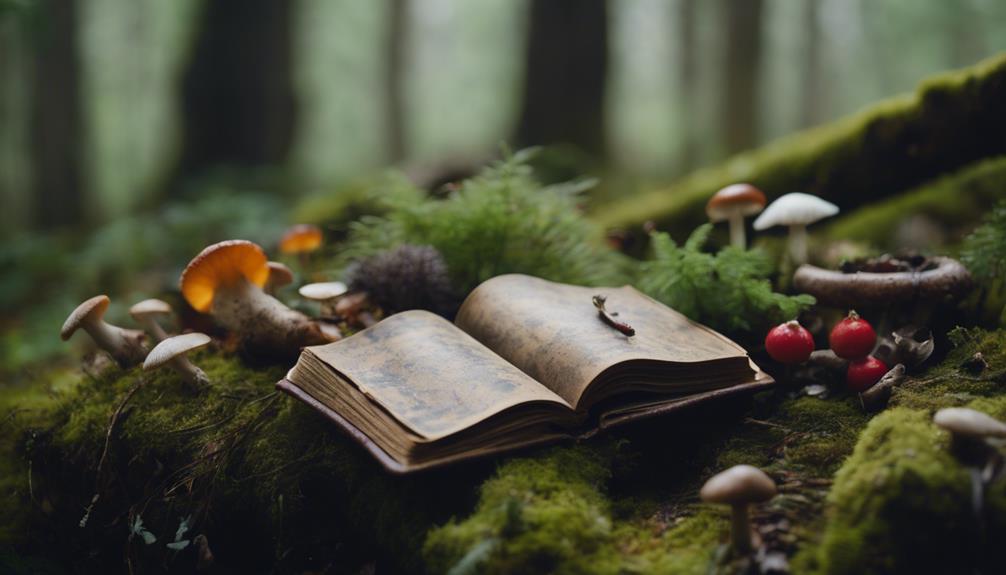
You'll find a wealth of resources available to help you master the art of foraging in Michigan, from university workshops to detailed field guides. Michigan State University offers workshops on field identification and culinary applications, providing hands-on experience and expert knowledge. For a more self-guided approach, field guides provide detailed descriptions and habitat information for Michigan's native edible plants. These resources are essential for proper identification, ensuring safe and sustainable foraging practices.
| Resource | Description |
|---|---|
| Michigan State University Workshops | Hands-on field identification and culinary applications |
| Field Guides | Detailed descriptions and habitat information for Michigan's native edible plants |
| Online Forums | Connect with experienced foragers, share tips, and learn from others |
| Guided Foraging Tours | Explore Michigan's diverse ecosystems with expert guides |
Frequently Asked Questions
What Is the Rule of Thumb for Foraging?
When you're foraging, remember that the rule of thumb is to always positively identify wild edibles before consumption to avoid toxic species, so you don't end up eating something harmful.
How to Forage Properly?
'When you're foraging, think of yourself as a detective, searching for clues to identify the perfect edible. You seek guidance from experts, avoid contaminated areas, cook mushrooms, and test new species in small amounts to guarantee a safe and delicious harvest.'
How Do Beginners Do Forage?
You start foraging by learning to identify common edibles, investing in essential tools, and practicing ethical foraging; then, you'll be ready to explore the wild world of foraging, taking only what you need while respecting the environment.
How to Become a Good Forager?
As you wander through the woods, imagine being a detective, searching for clues to uncover nature's hidden treasures. To become a good forager, you'll need to develop your observation skills, patience, and knowledge of the natural world.
Conclusion
As you venture into Michigan's wild, remember that foraging isn't just about finding food – it's about forging a connection with the land.
Imagine the state's edible landscape as a tapestry, woven with threads of wild berries, medicinal herbs, and ancient forests.
By embracing sustainable foraging practices, you'll become the thread that strengthens this delicate fabric, preserving Michigan's natural beauty for generations to come.
-

 Foraging Guides5 months ago
Foraging Guides5 months agoAre Forage Internships Worth It? Here's What You Need to Know!
-

 Vetted5 months ago
Vetted5 months ago15 Best Wilderness Survival Fiction Books to Fuel Your Adventurous Spirit
-
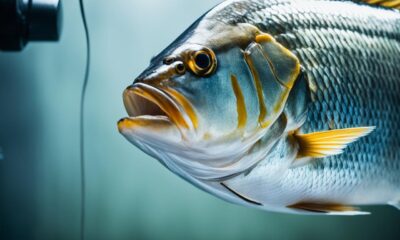
 Coastal Foraging5 months ago
Coastal Foraging5 months agoHow to Dry Age a Fish? The Ultimate Guide for Seafood Lovers
-
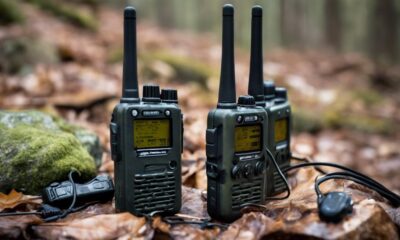
 Coastal Foraging5 months ago
Coastal Foraging5 months ago15 Best GMRS Radios for Preppers: Stay Prepared and Connected in Any Situation
-

 Vetted5 months ago
Vetted5 months ago6 Best Wilderness Survival Games for Ios to Test Your Skills in the Wild
-
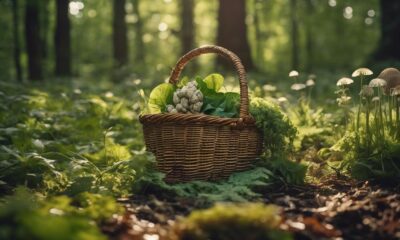
 How to Forage5 months ago
How to Forage5 months agoVirginia’s Wild Harvest: Forage for Delicious Edibles!
-

 Coastal Foraging5 months ago
Coastal Foraging5 months ago15 Best Baofeng Radios for Preppers – Stay Connected in Any Situation
-

 Survivalism5 months ago
Survivalism5 months agoPreppers Netflix: Top Shows to Watch for Survival Tips!




